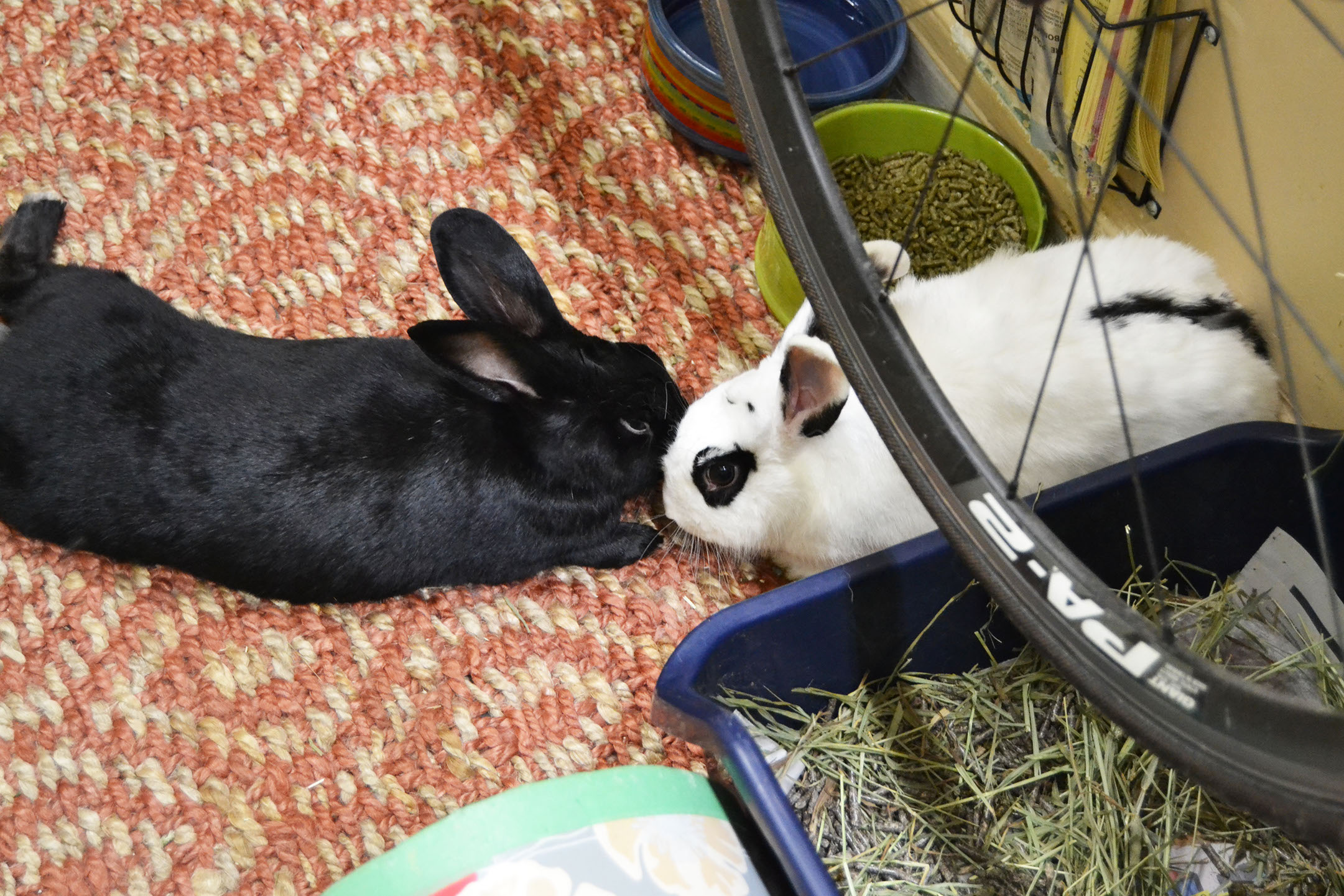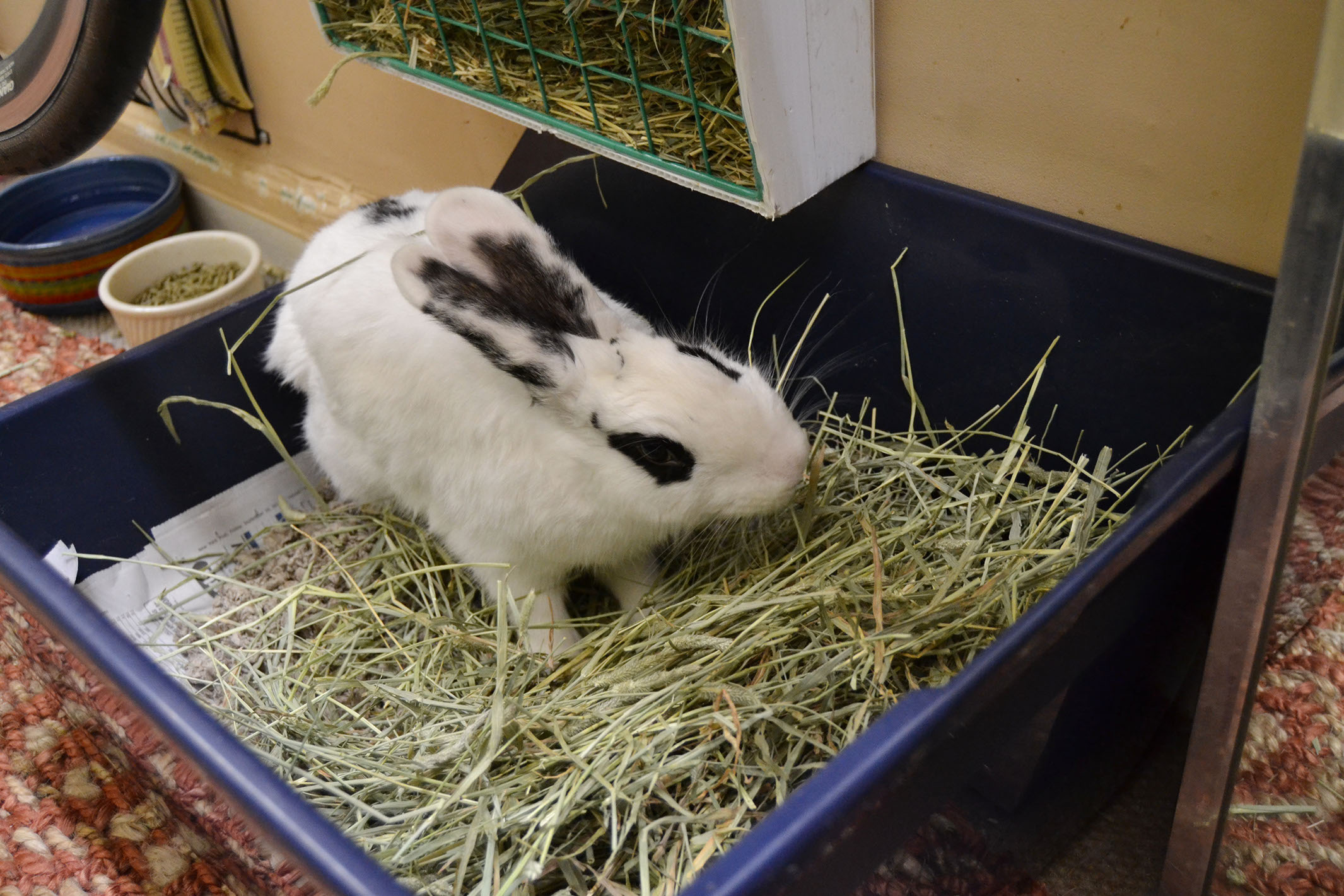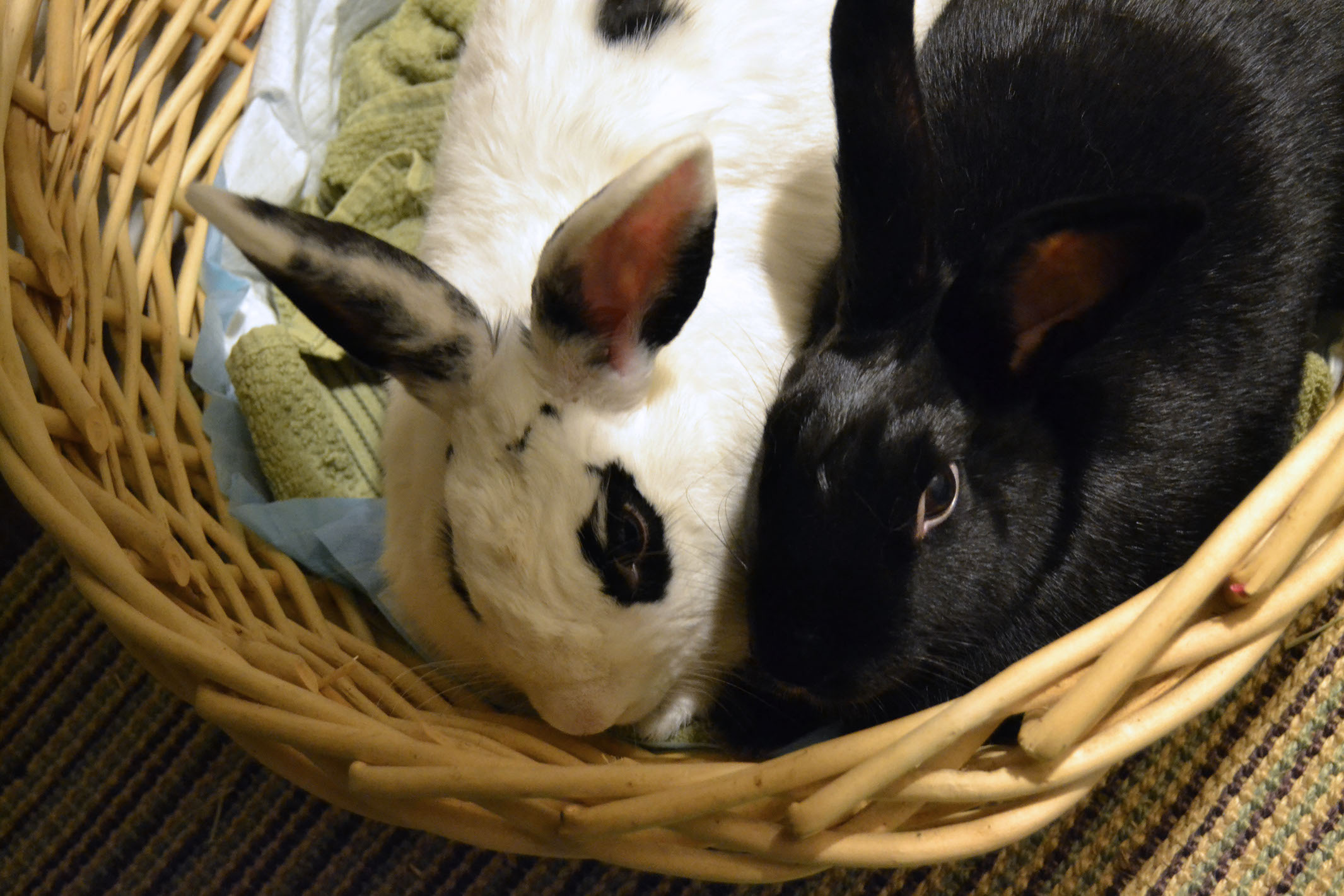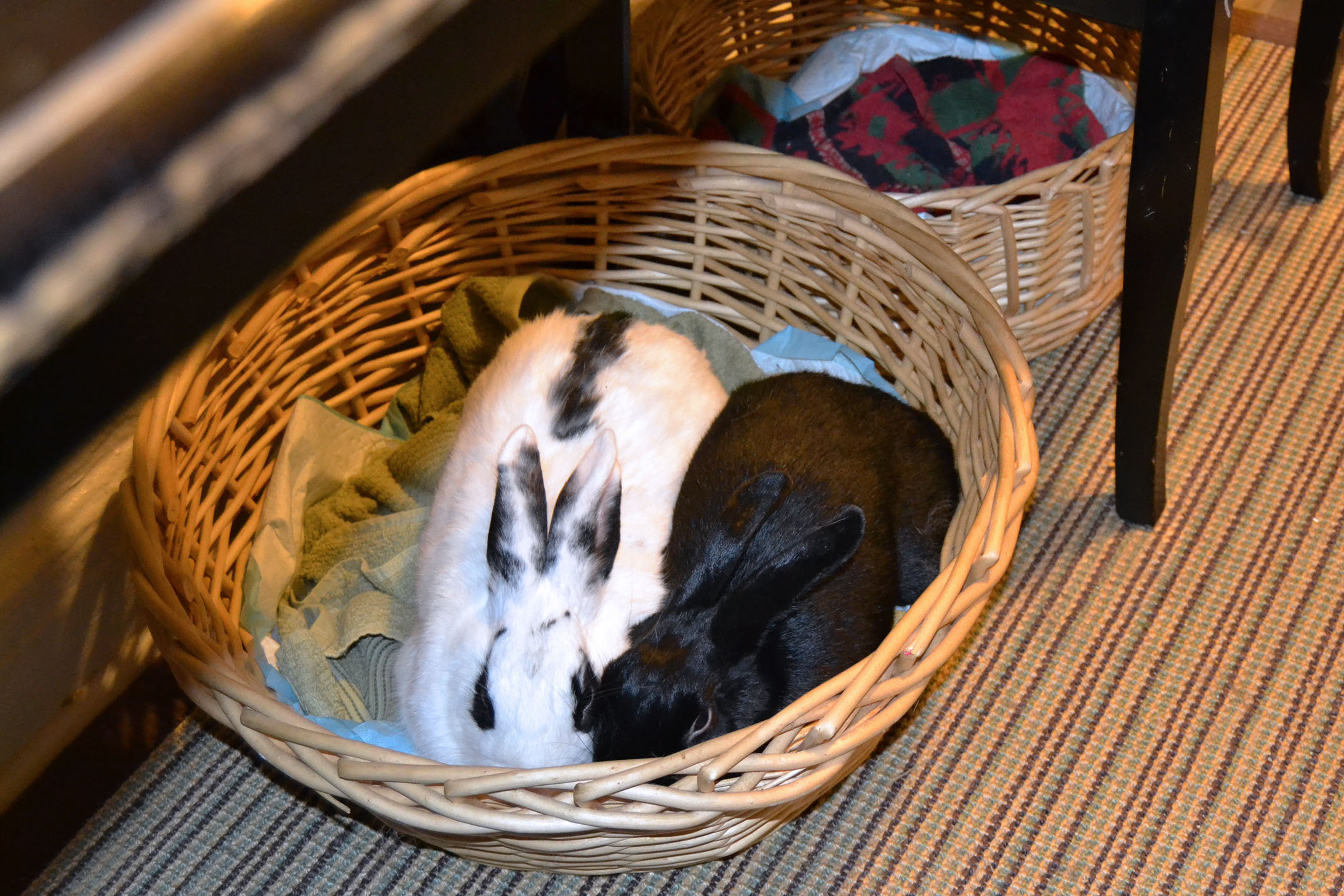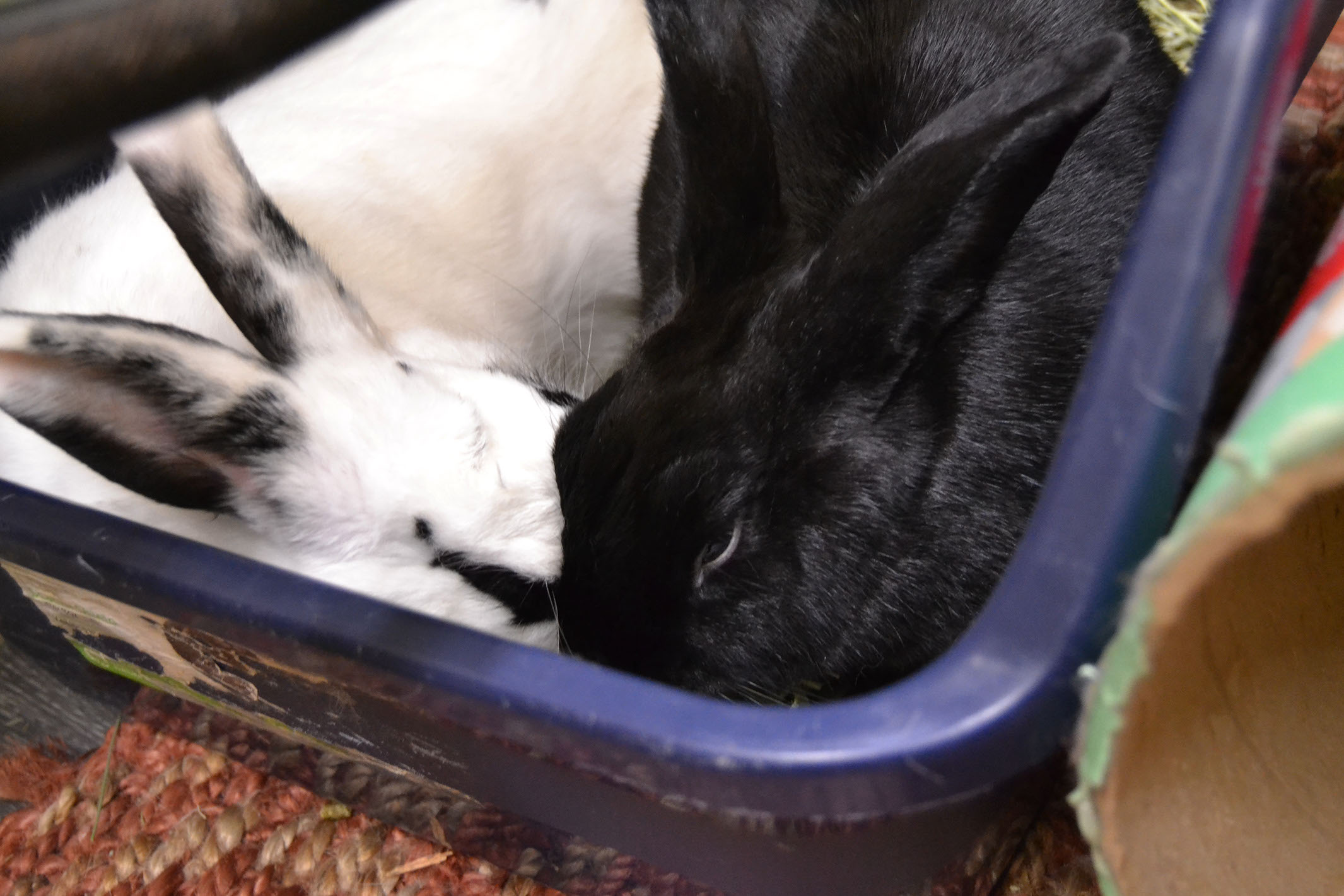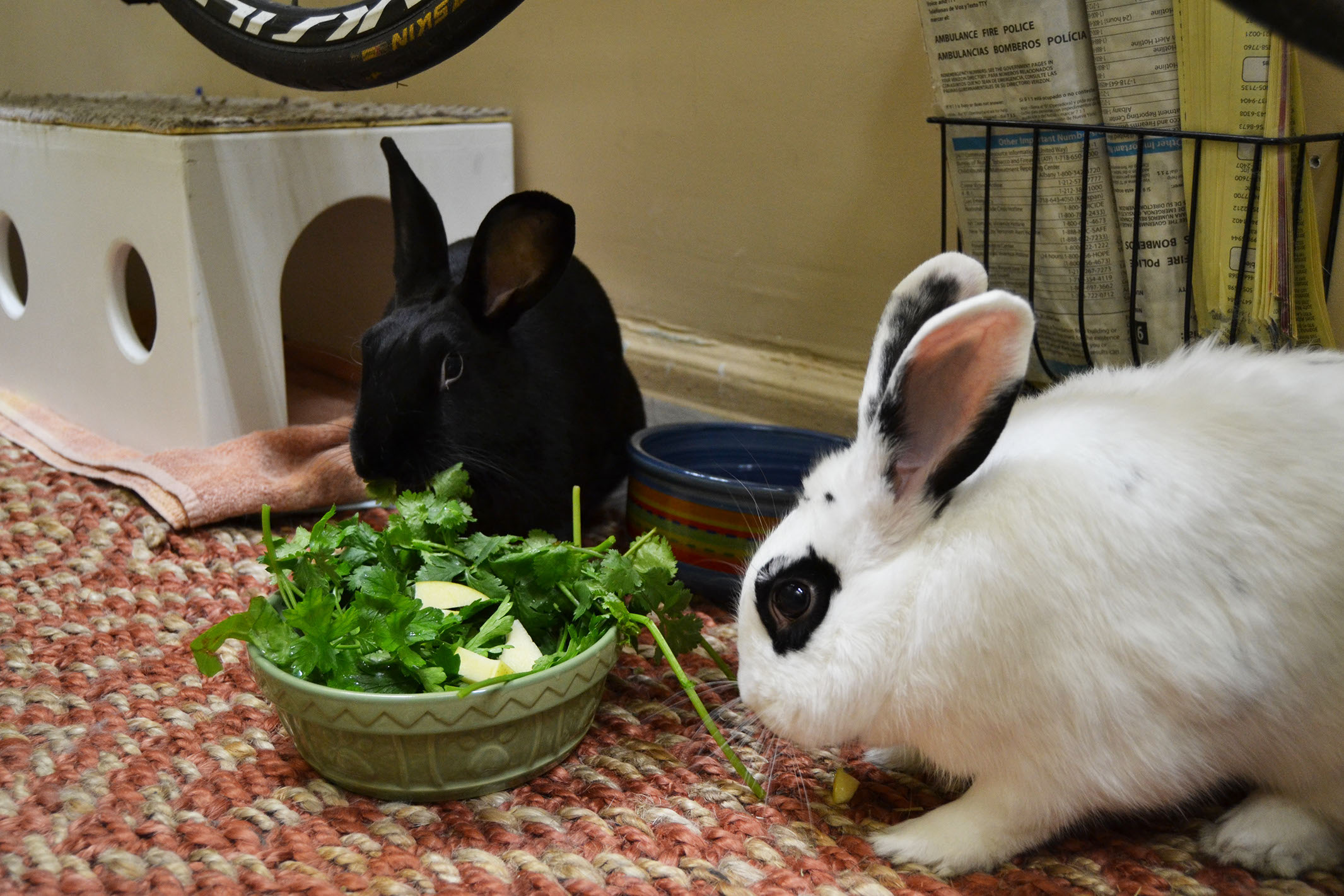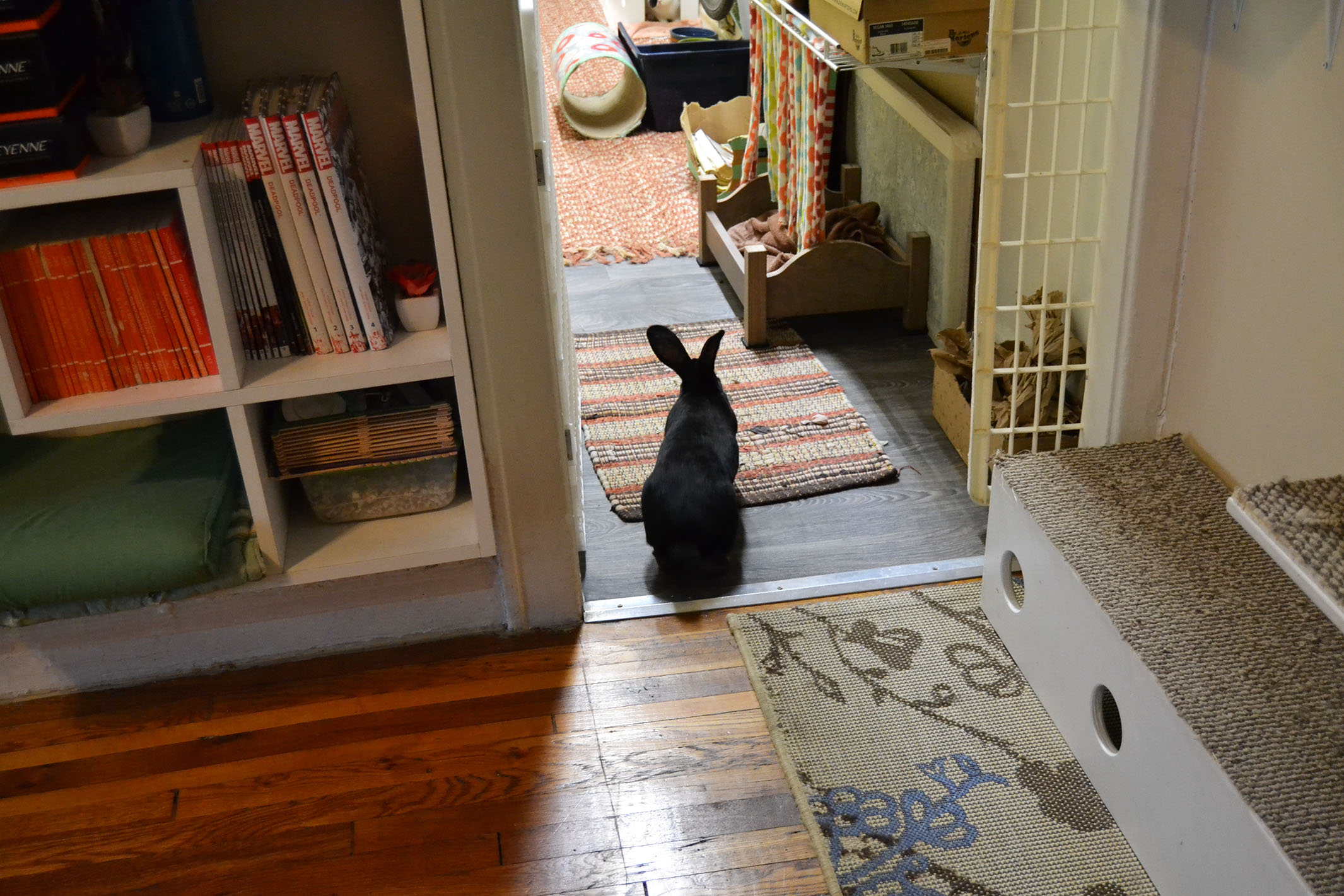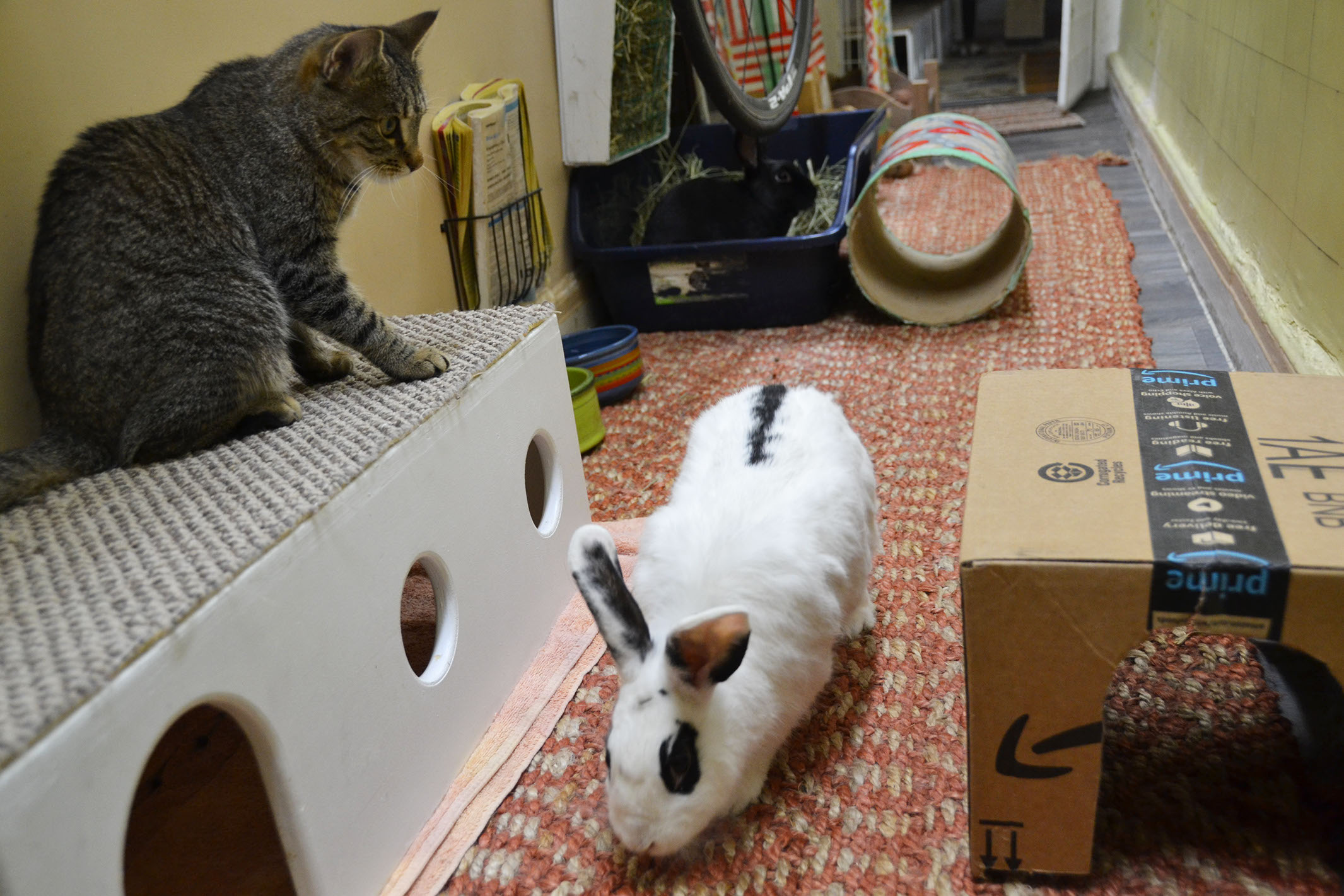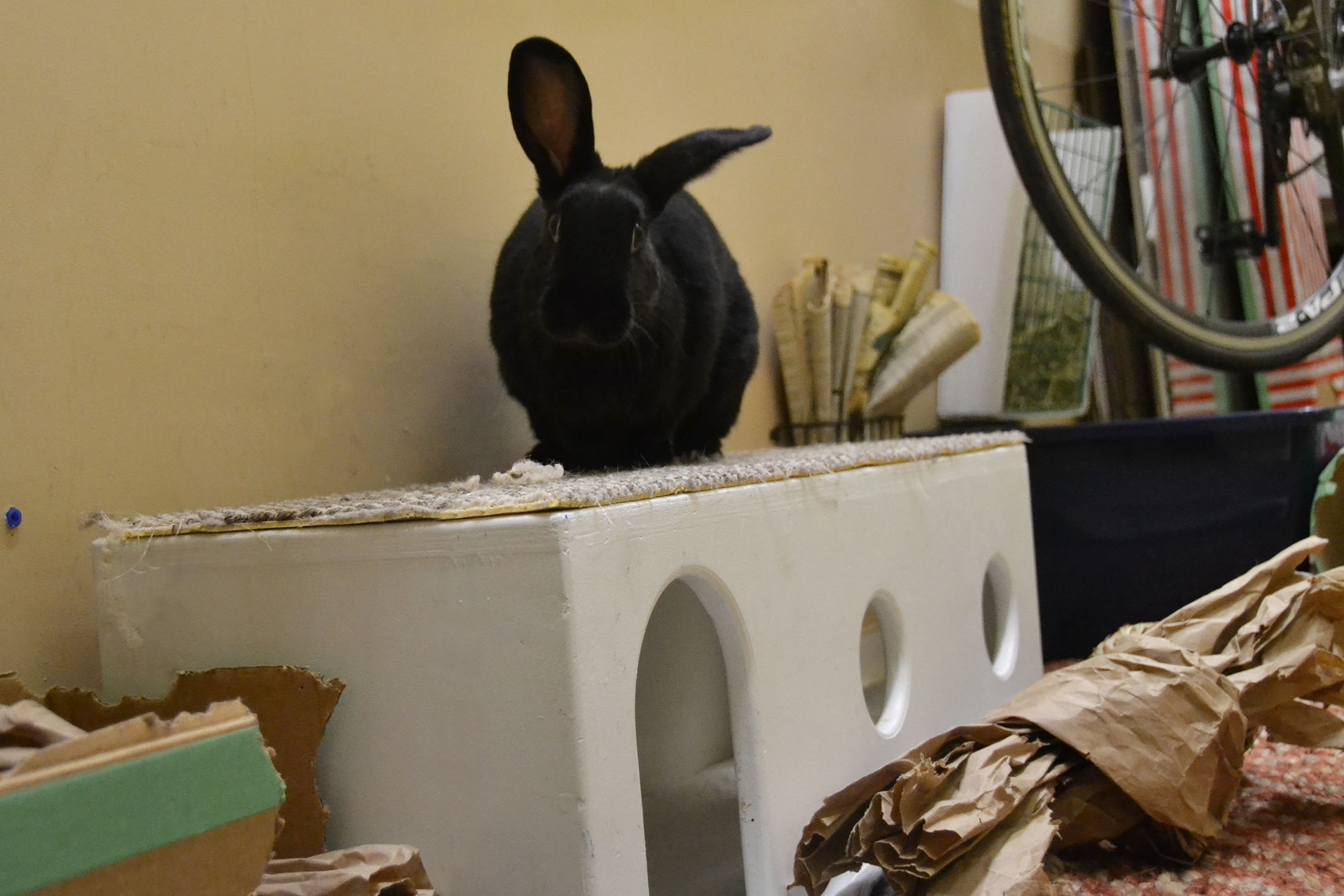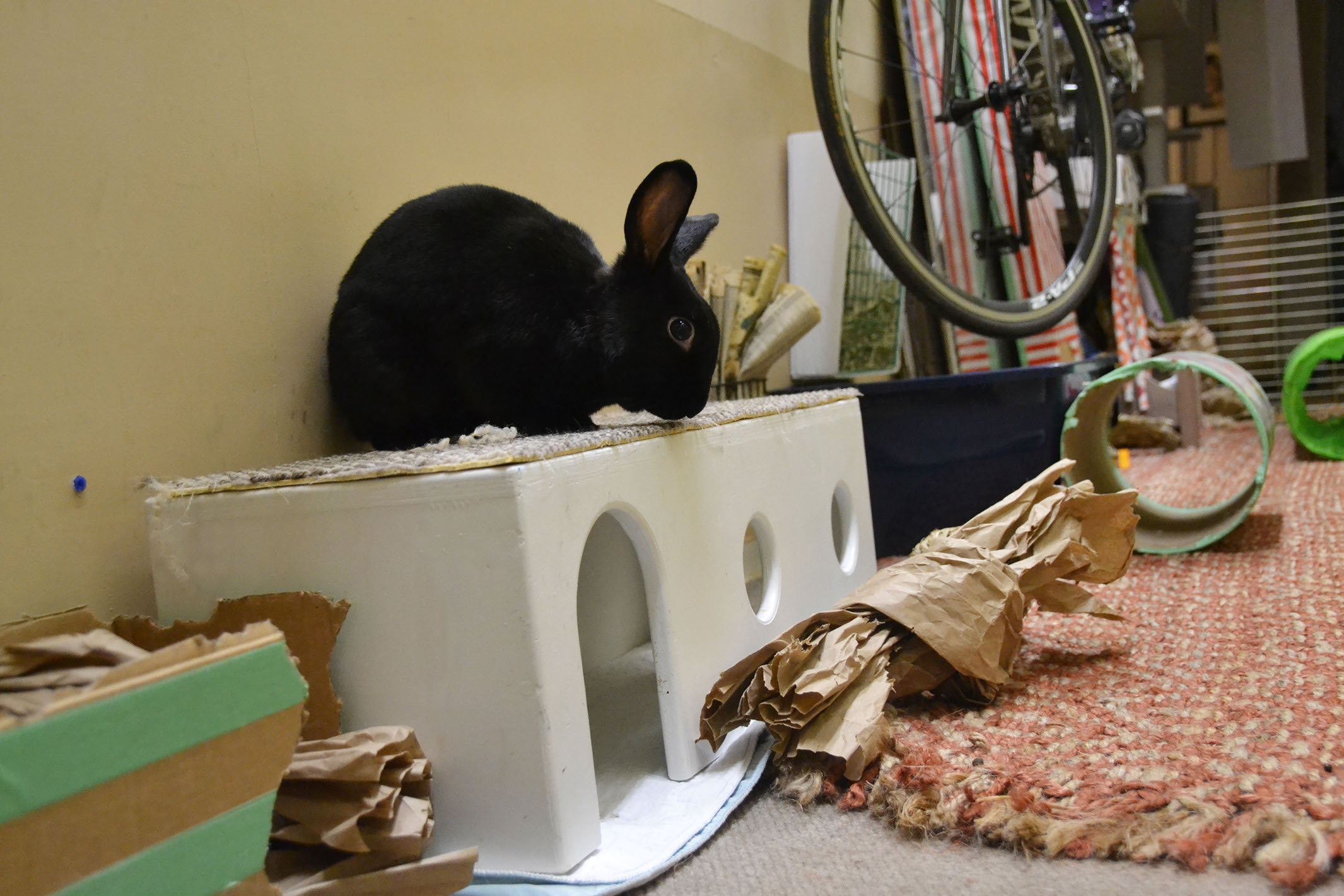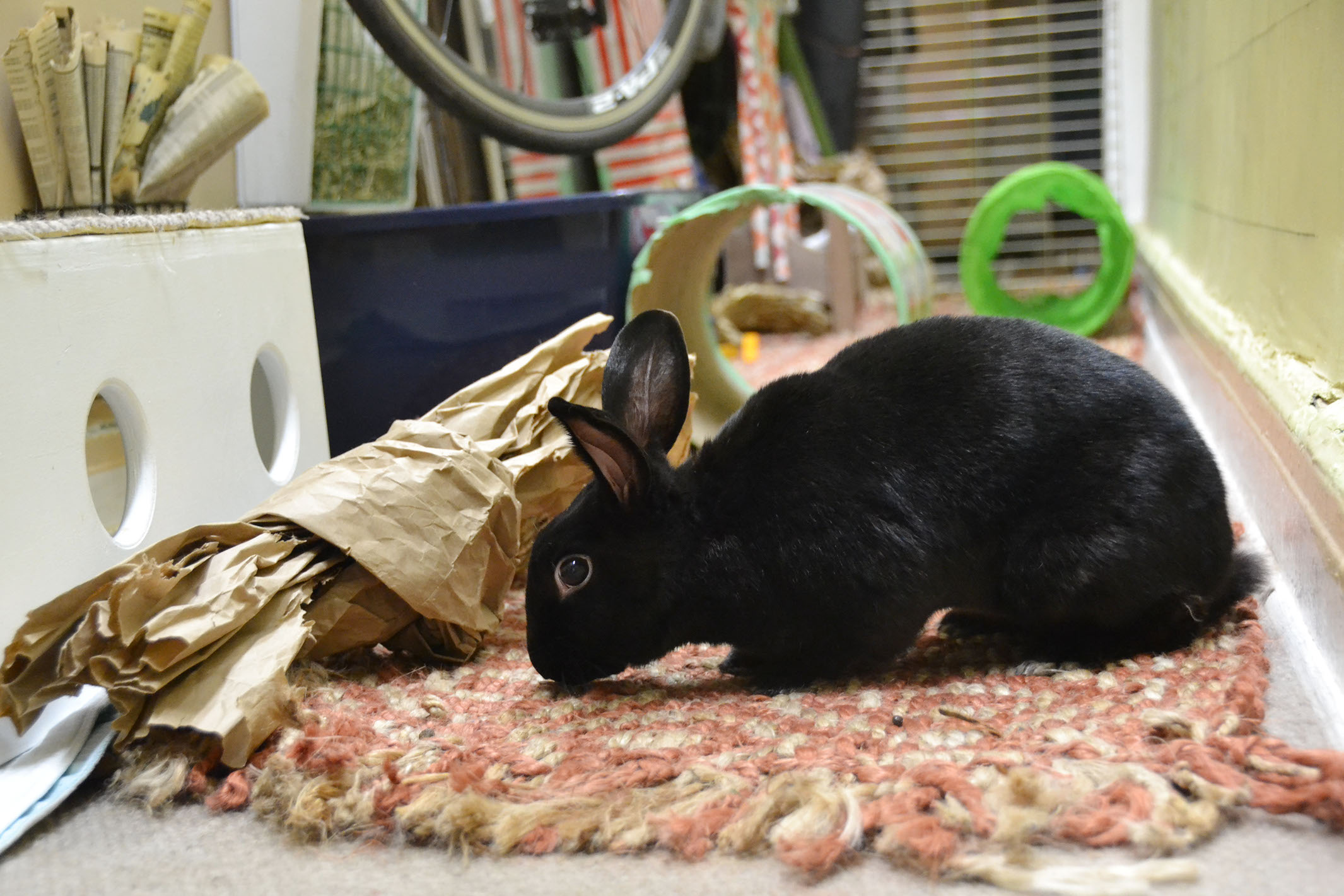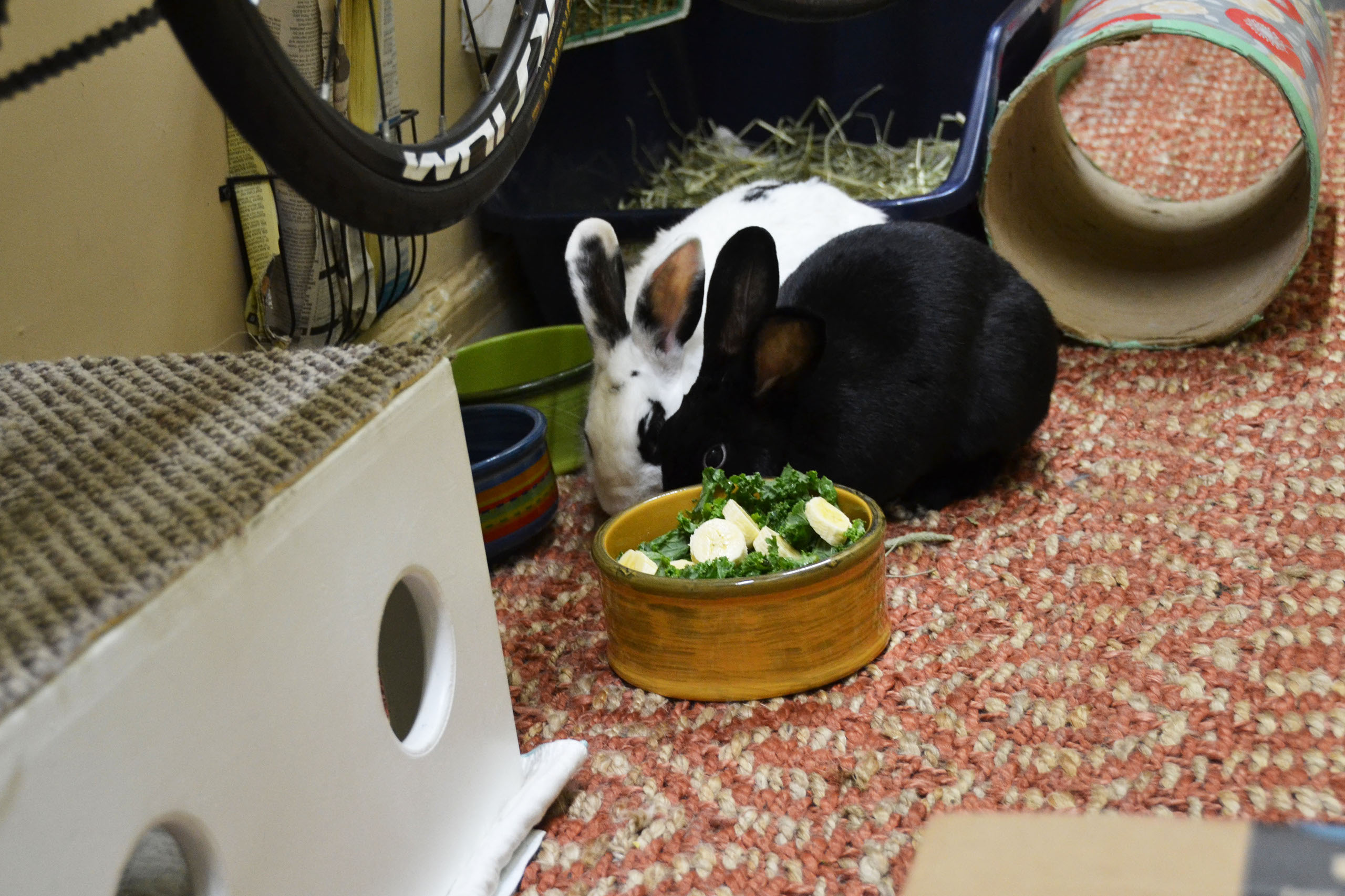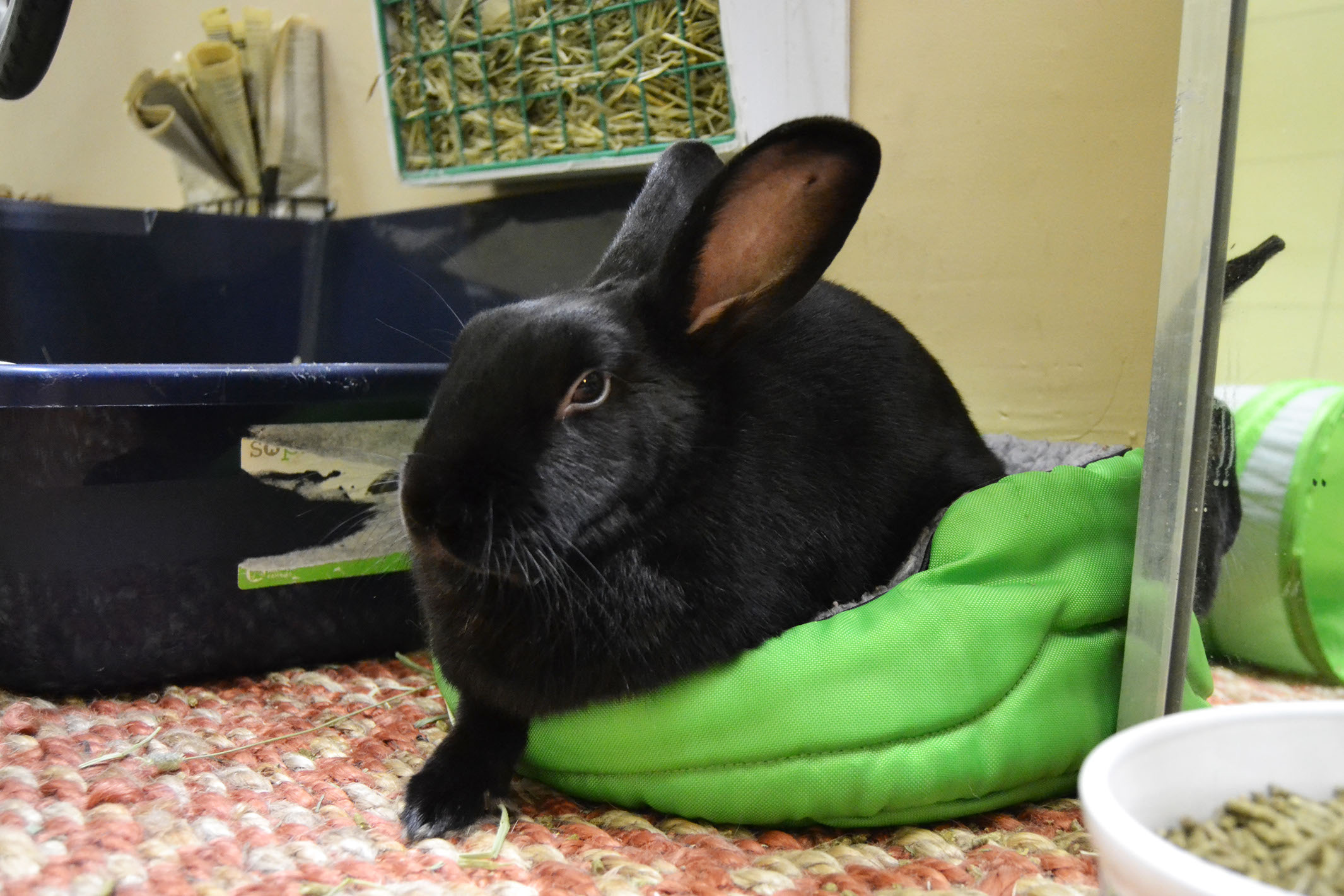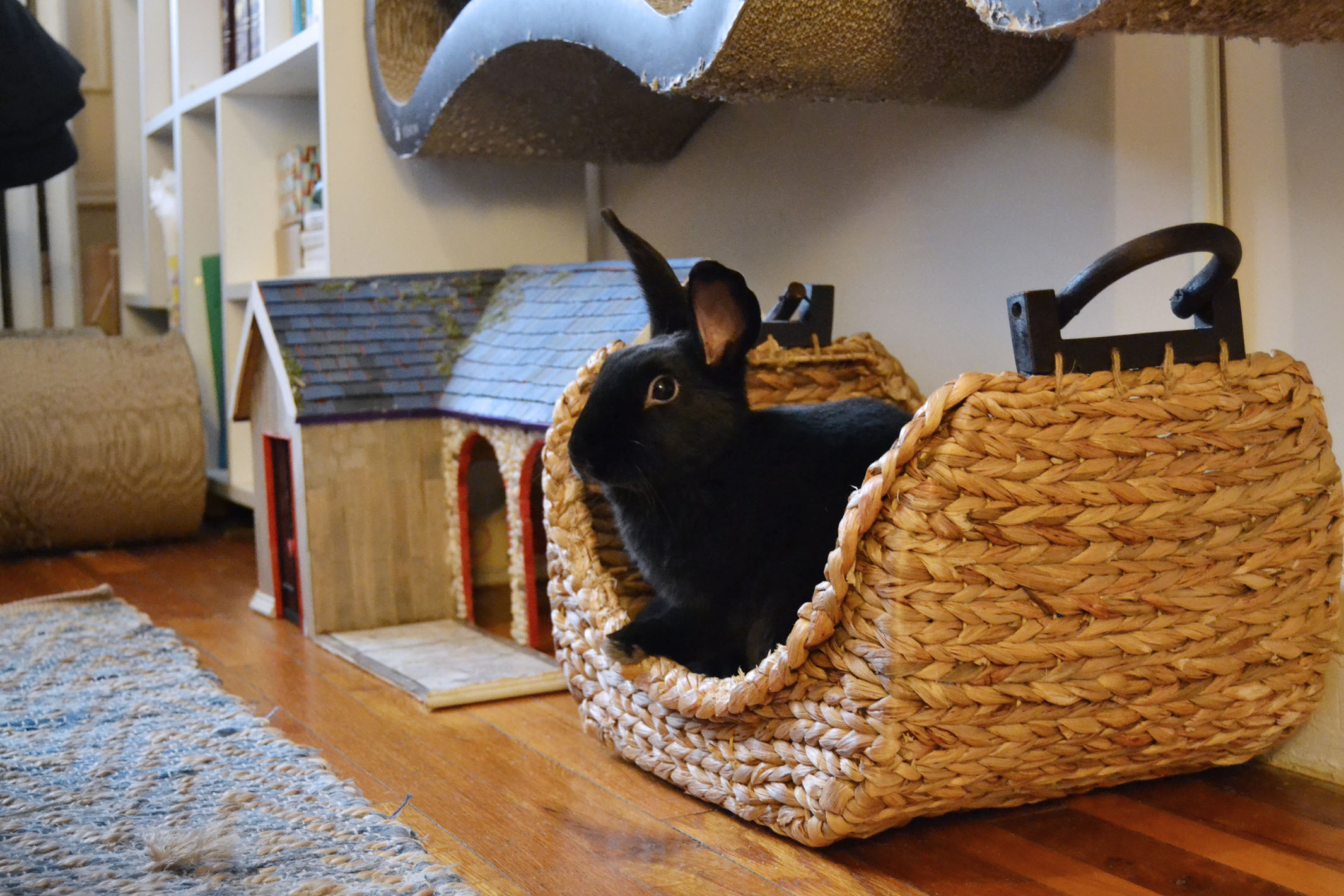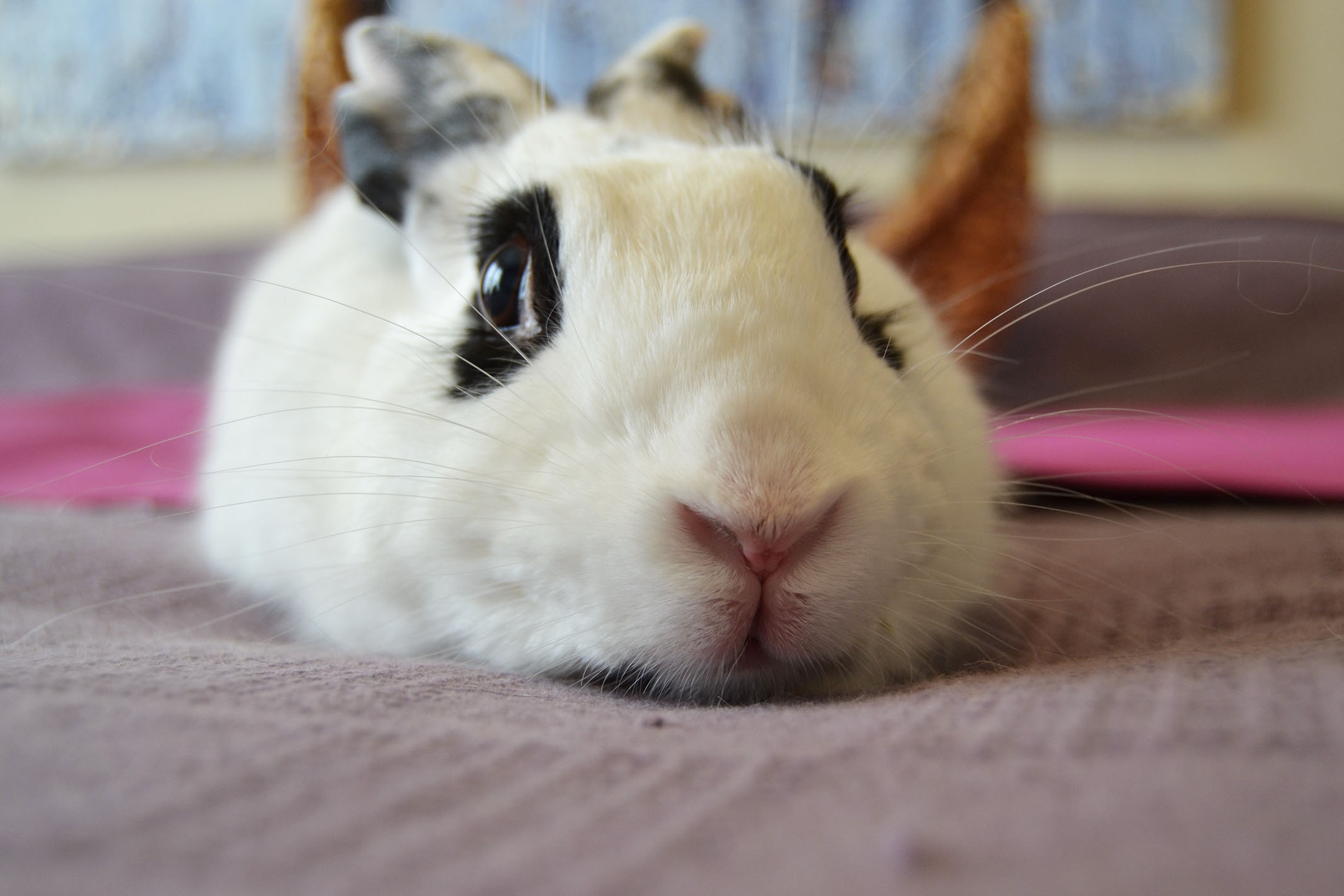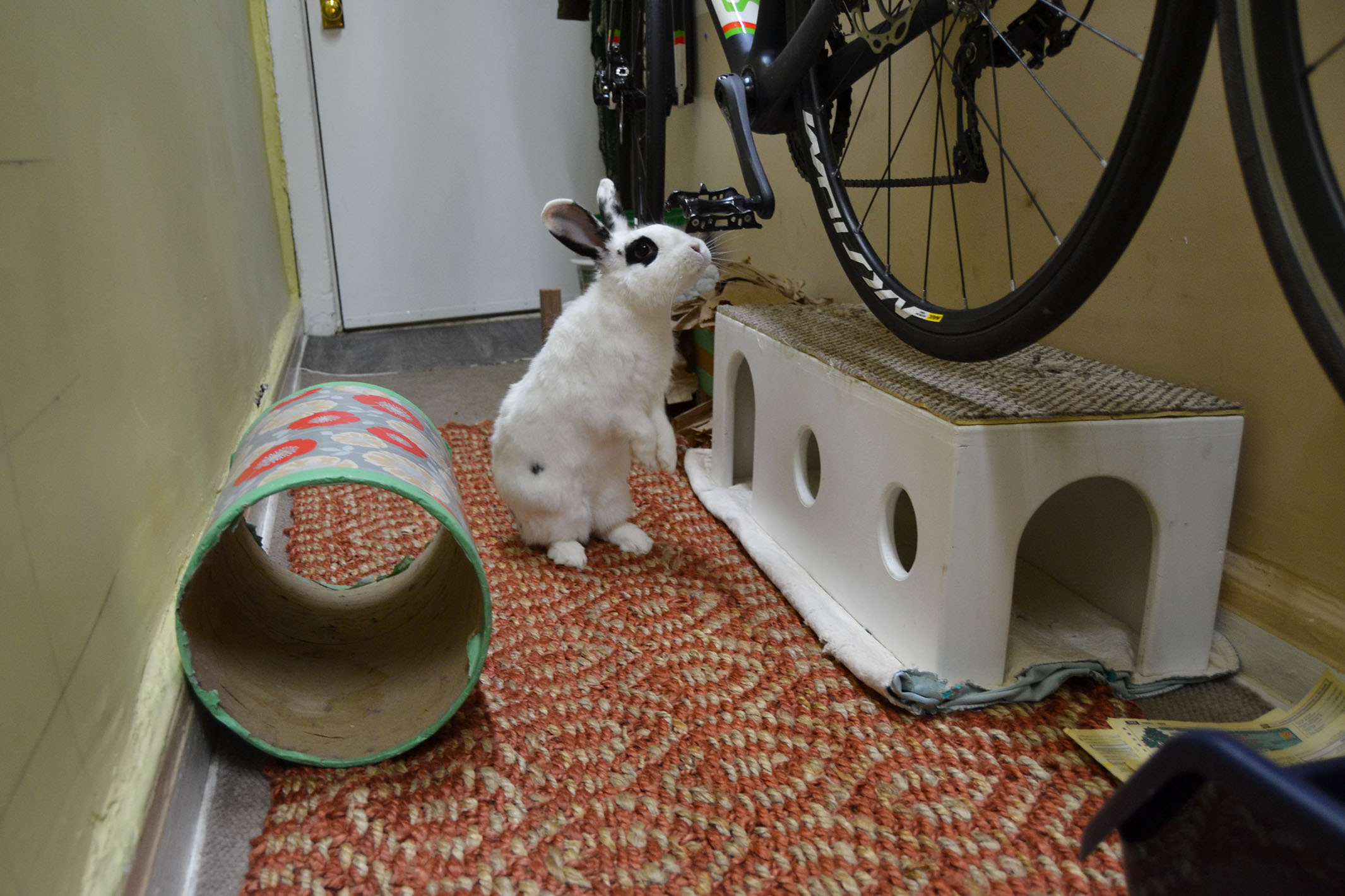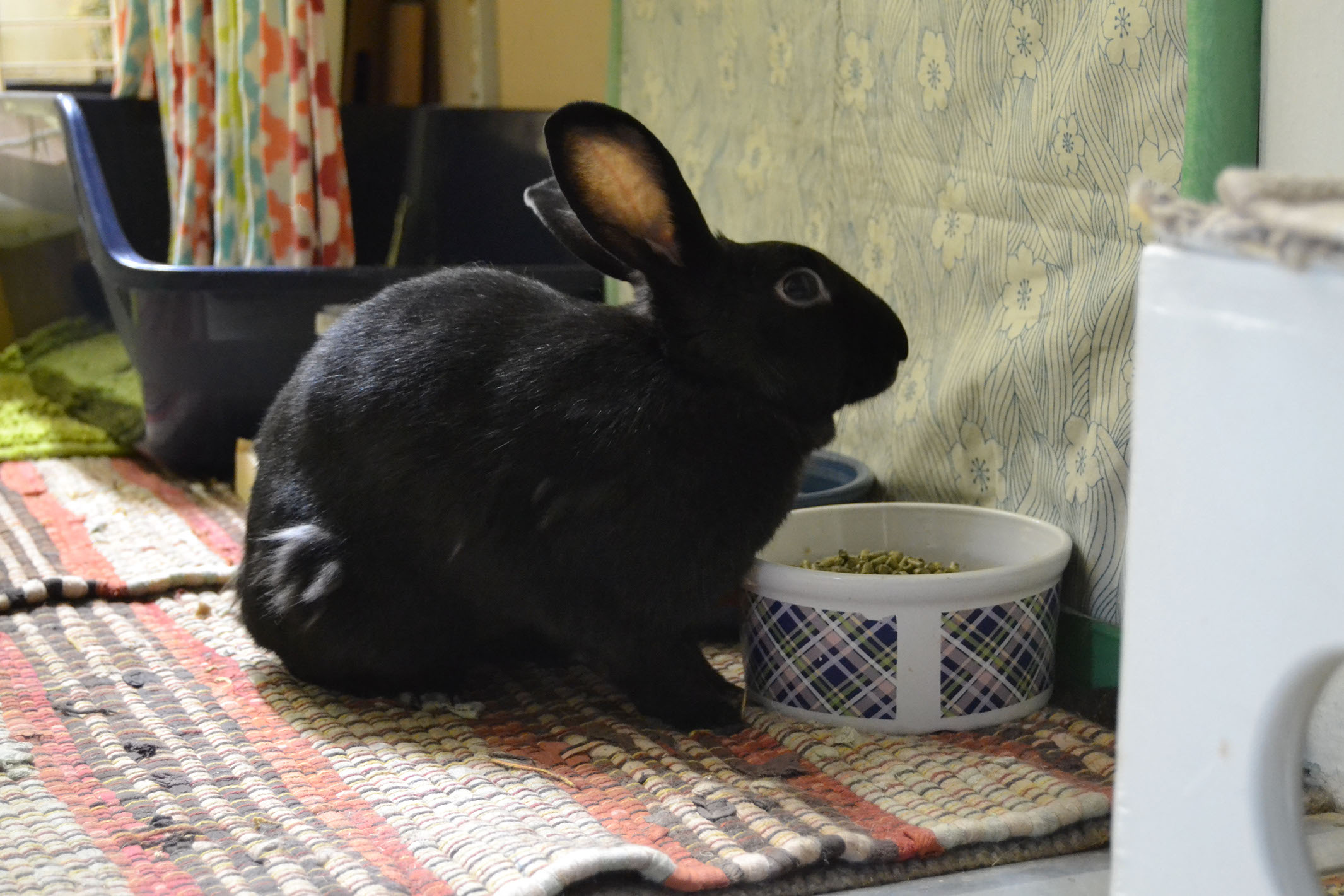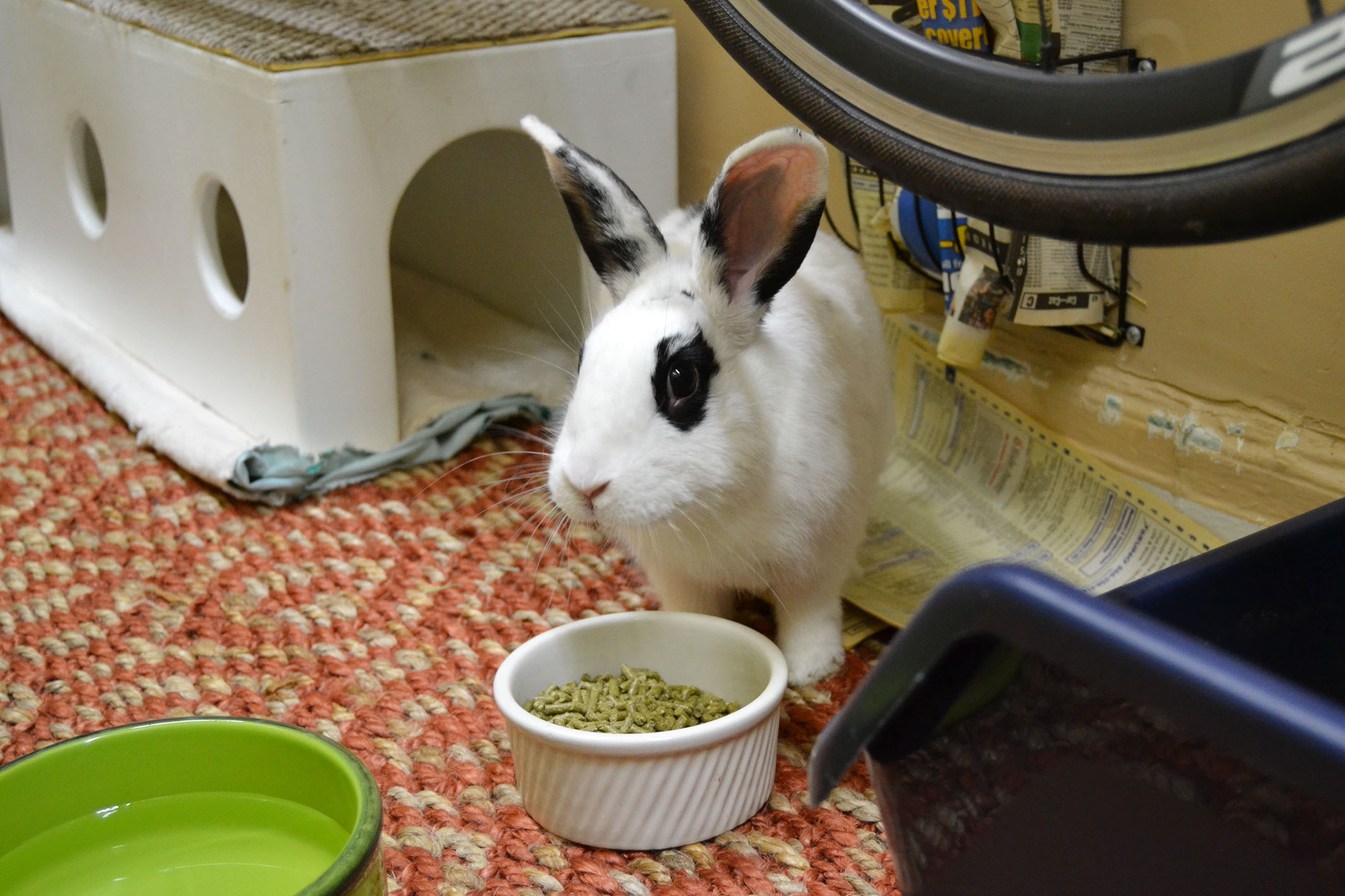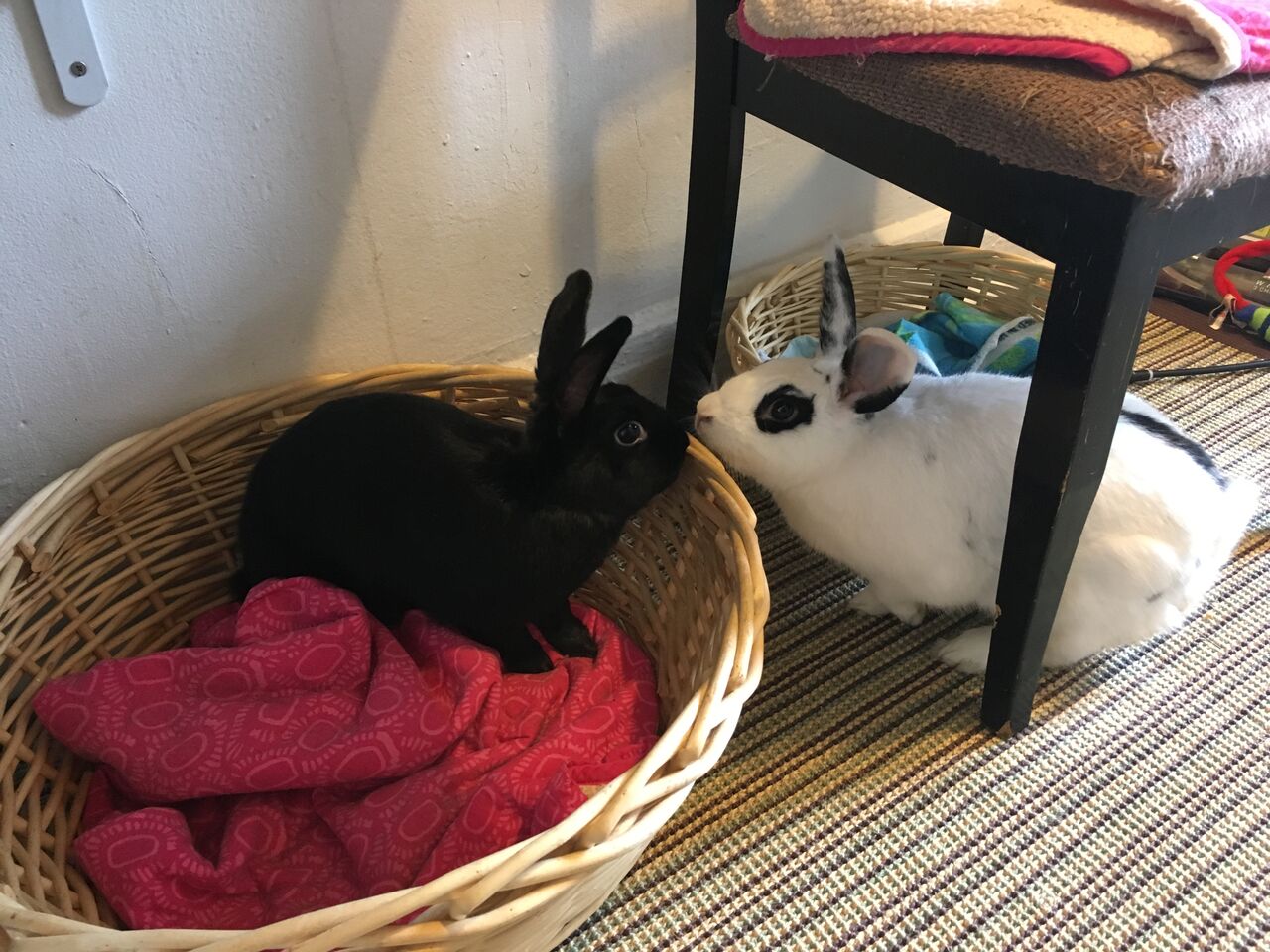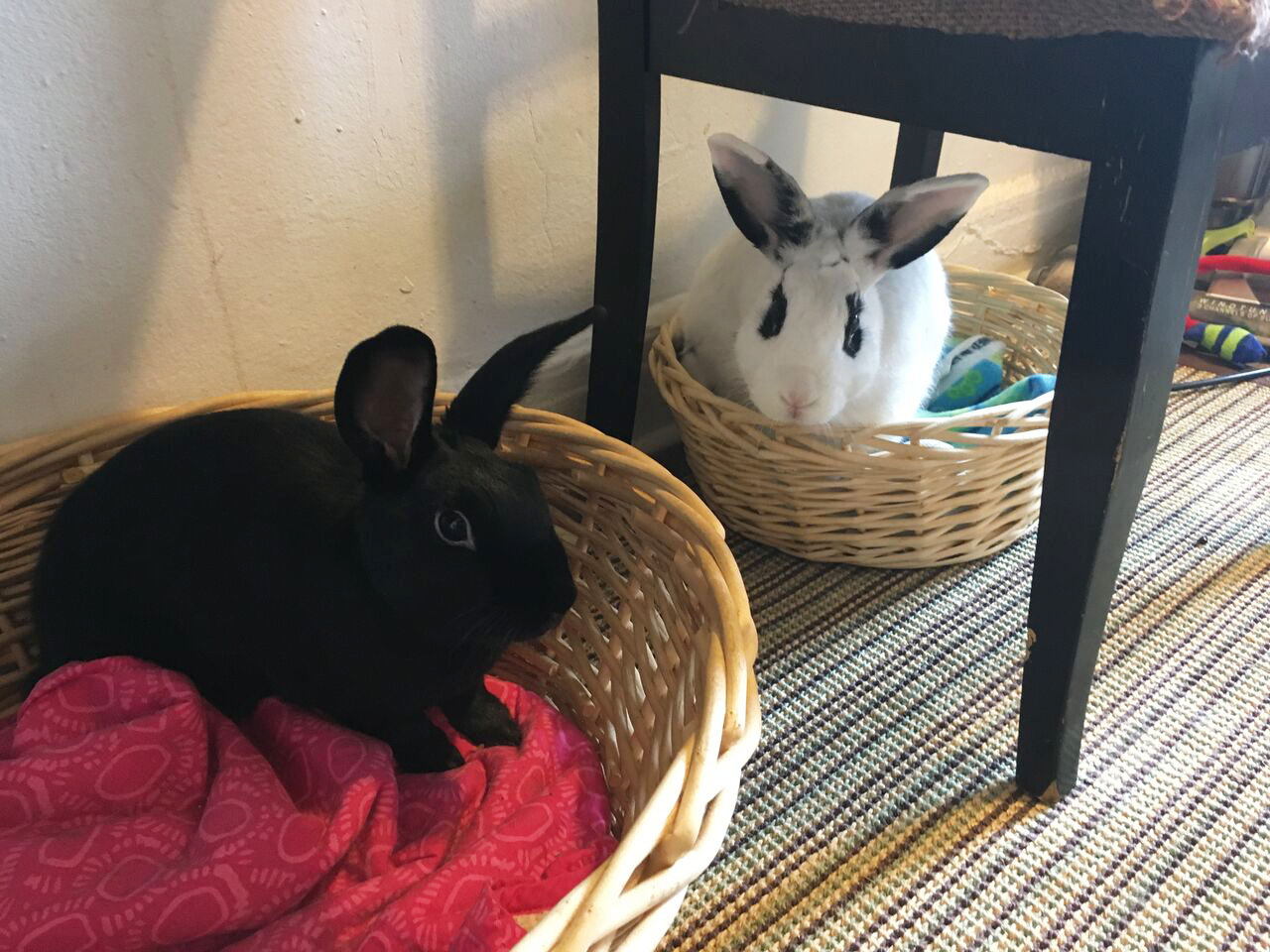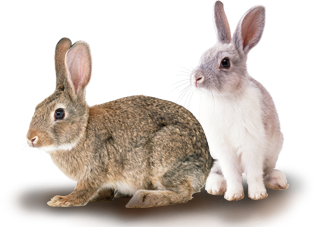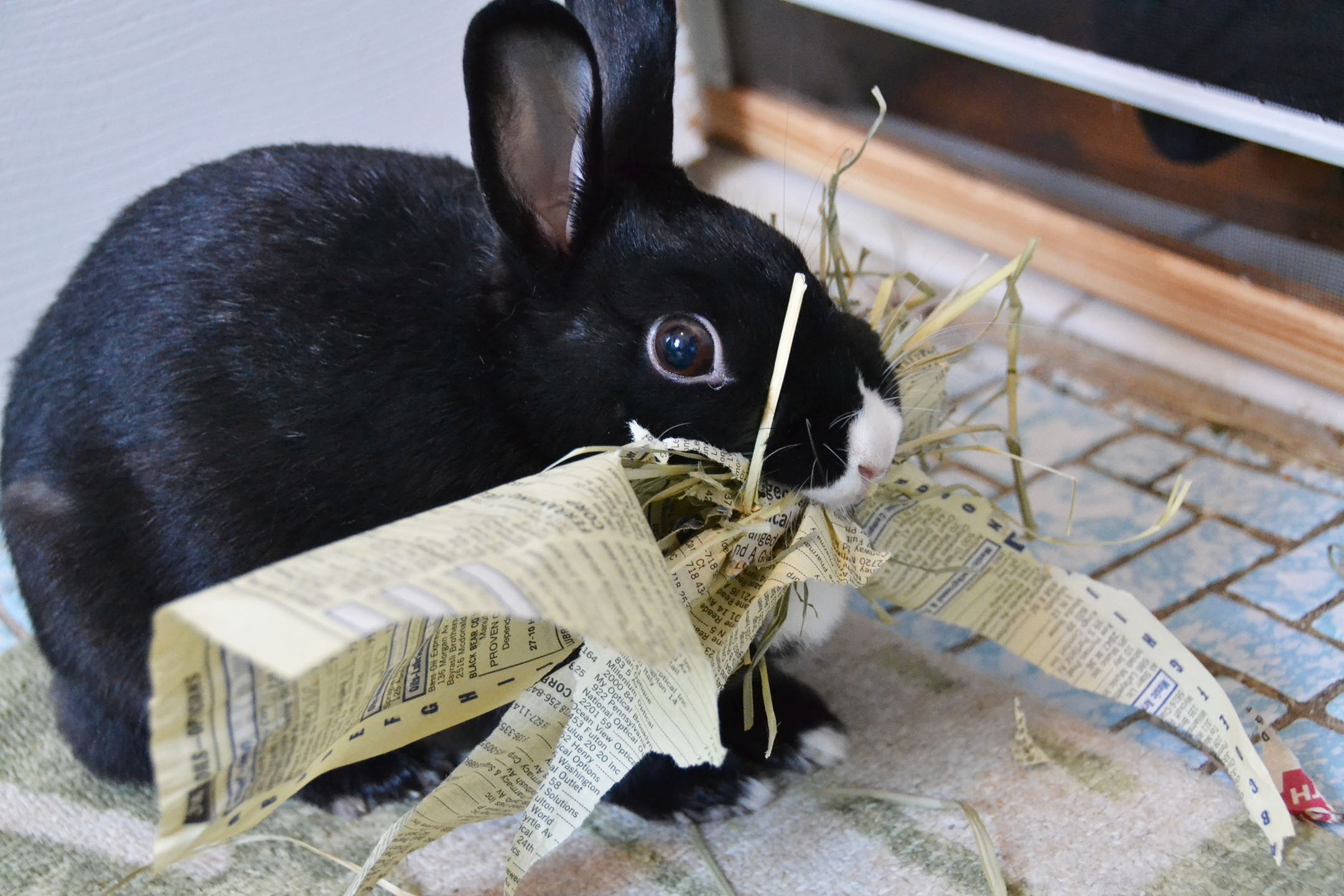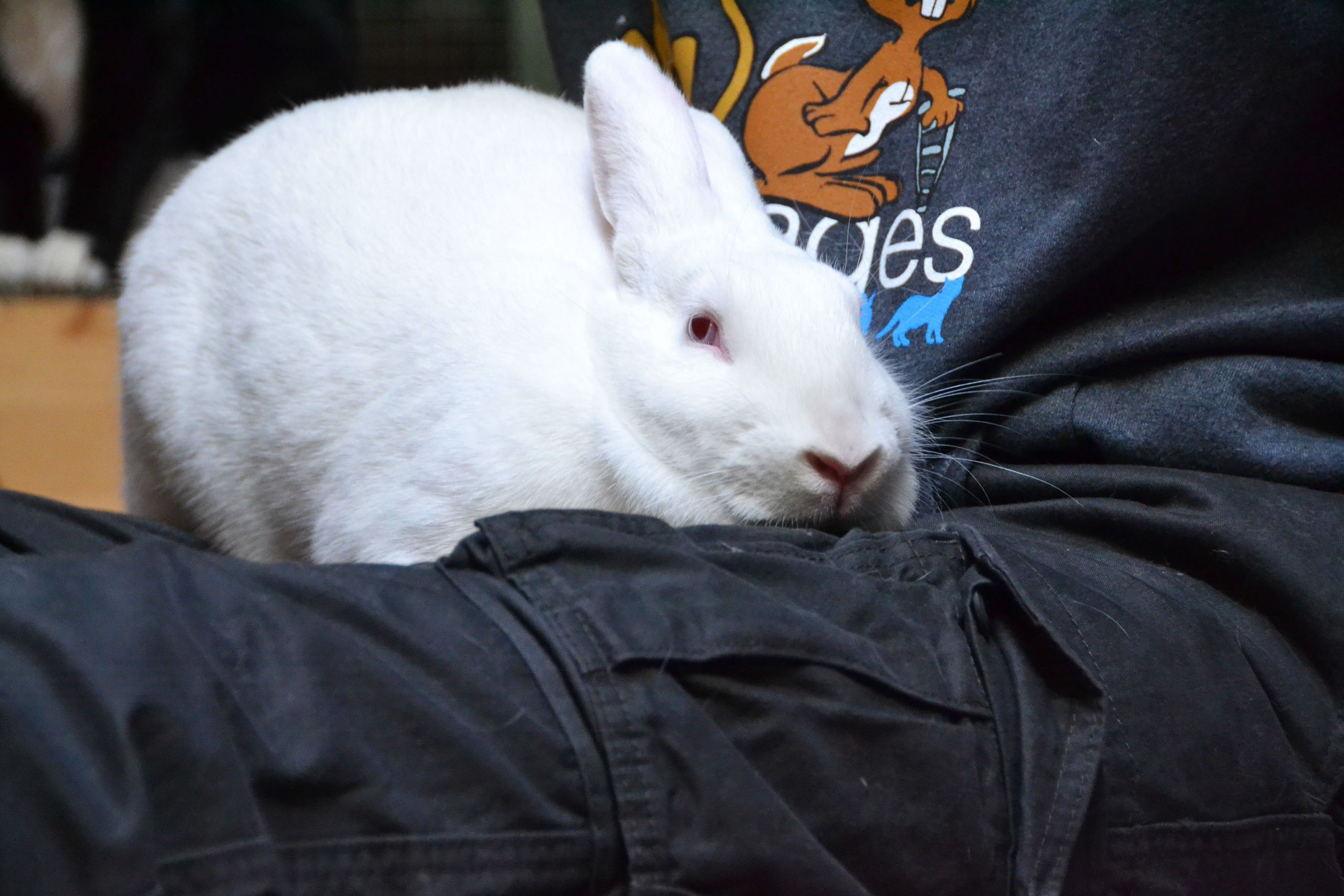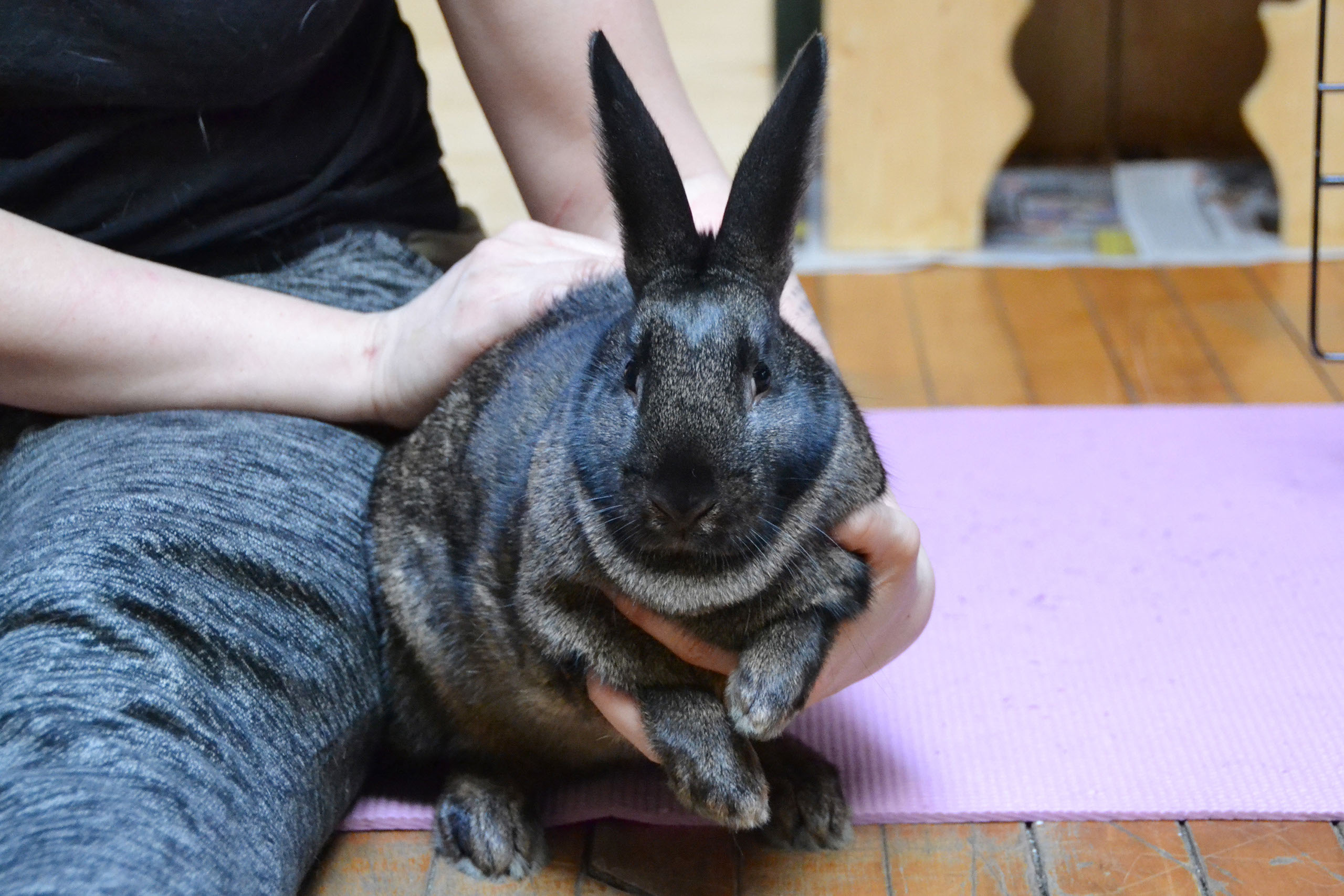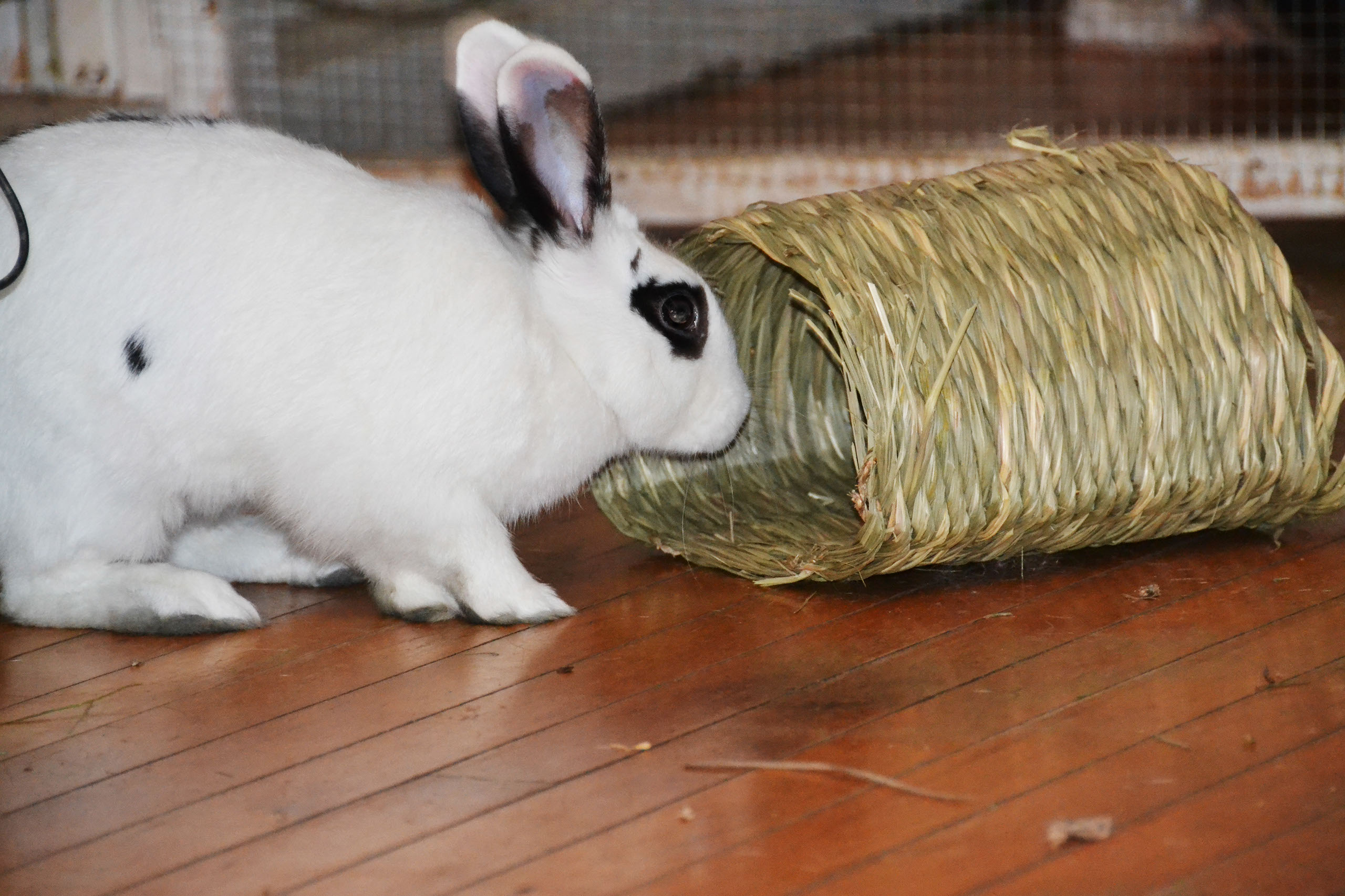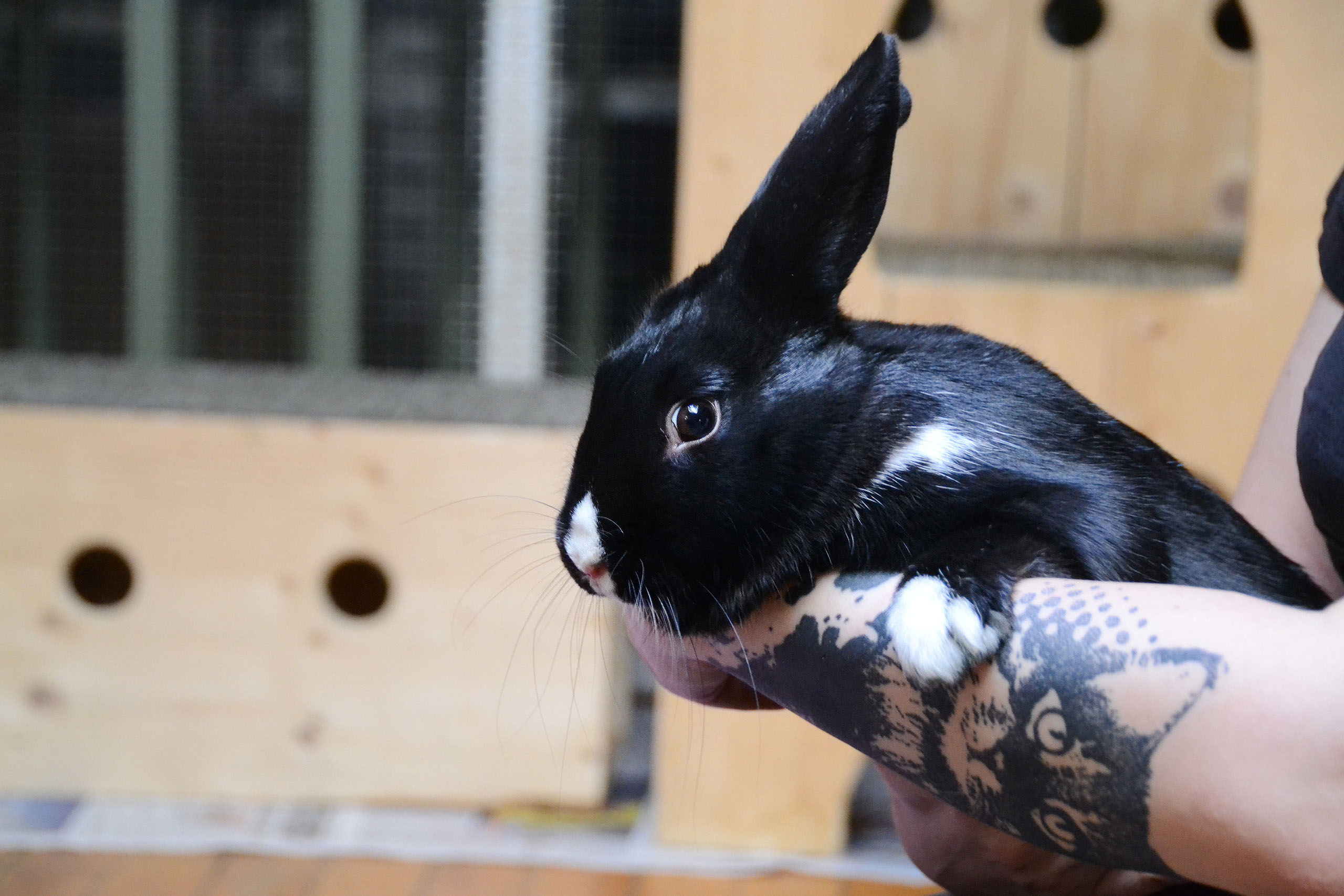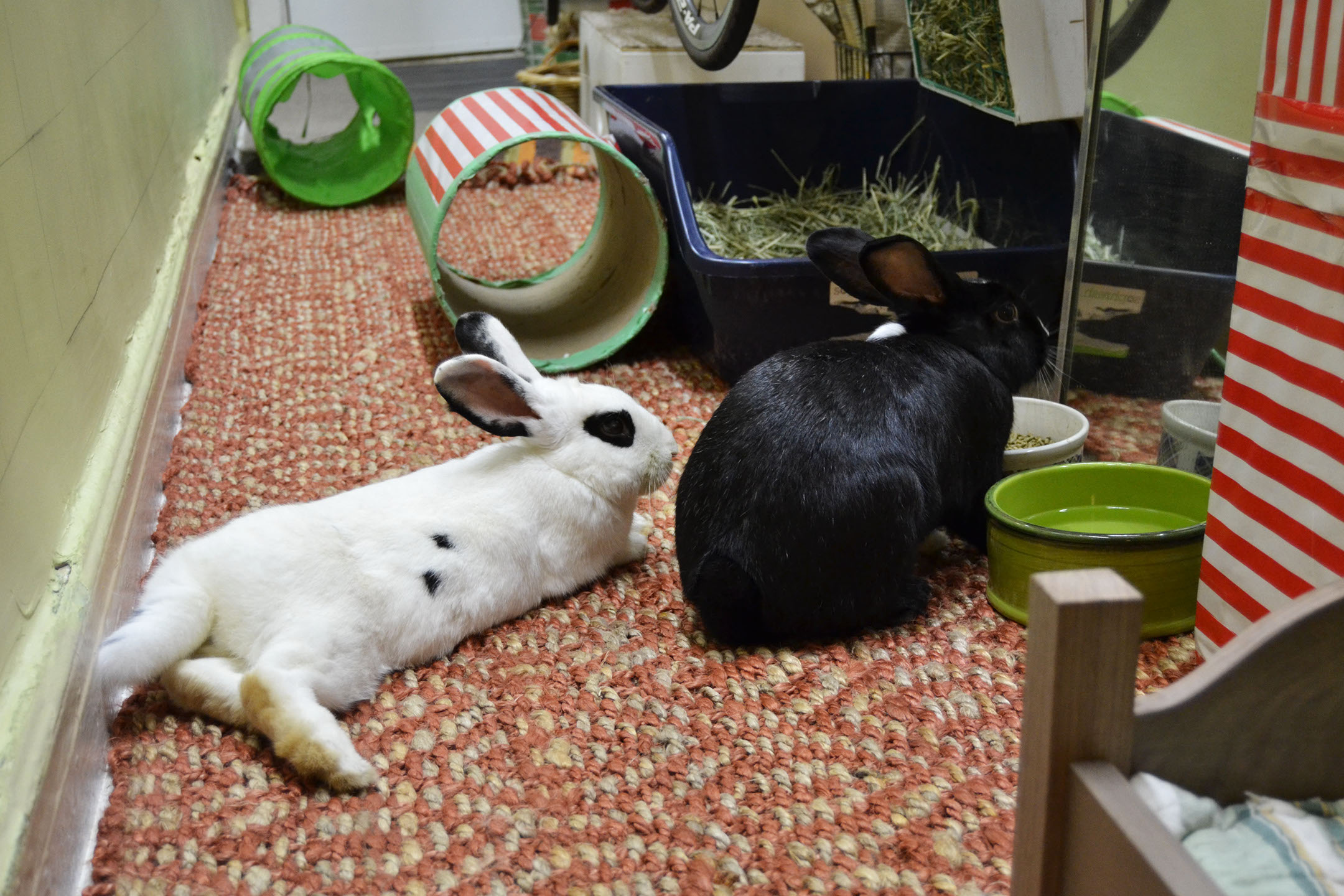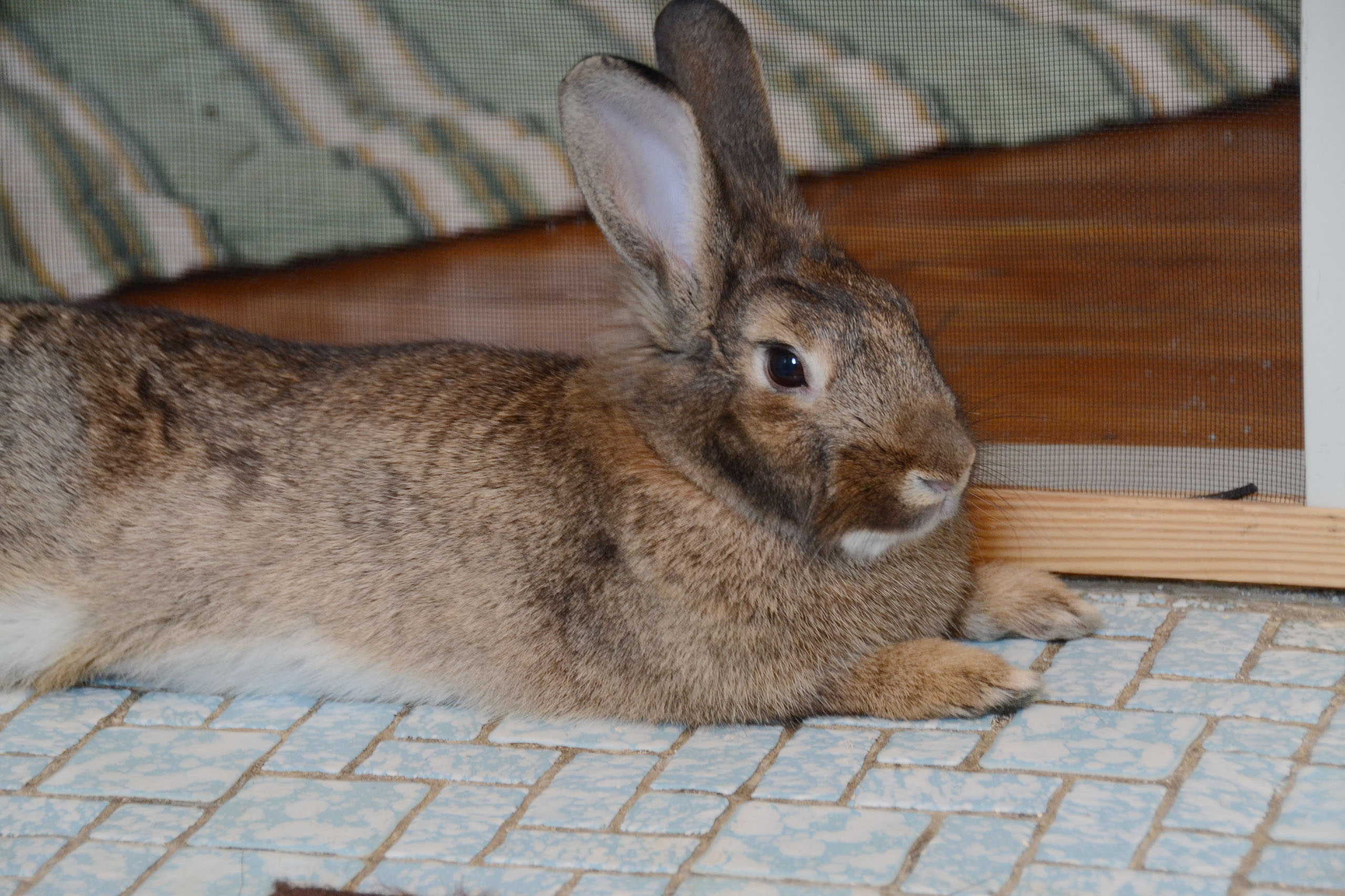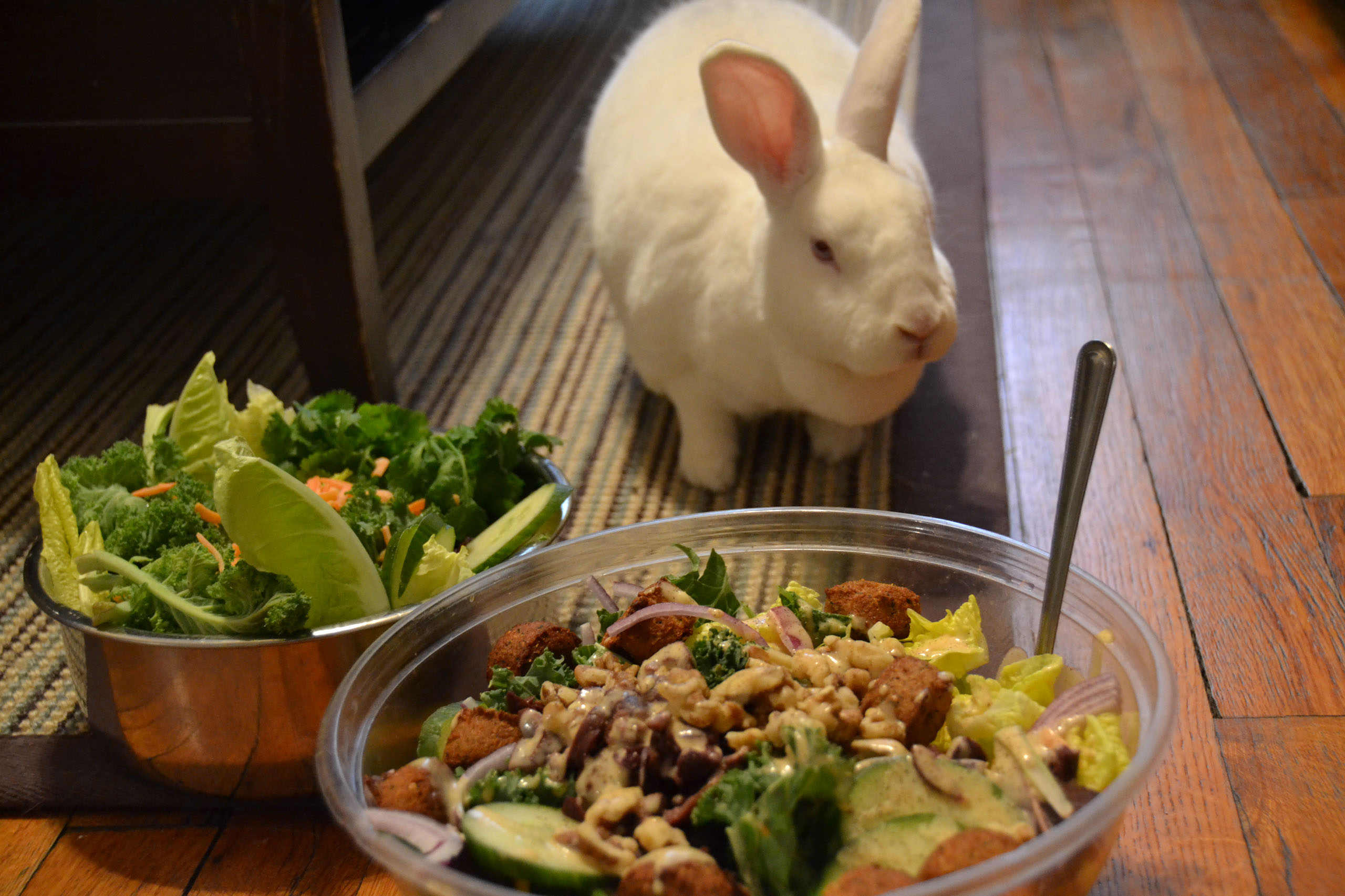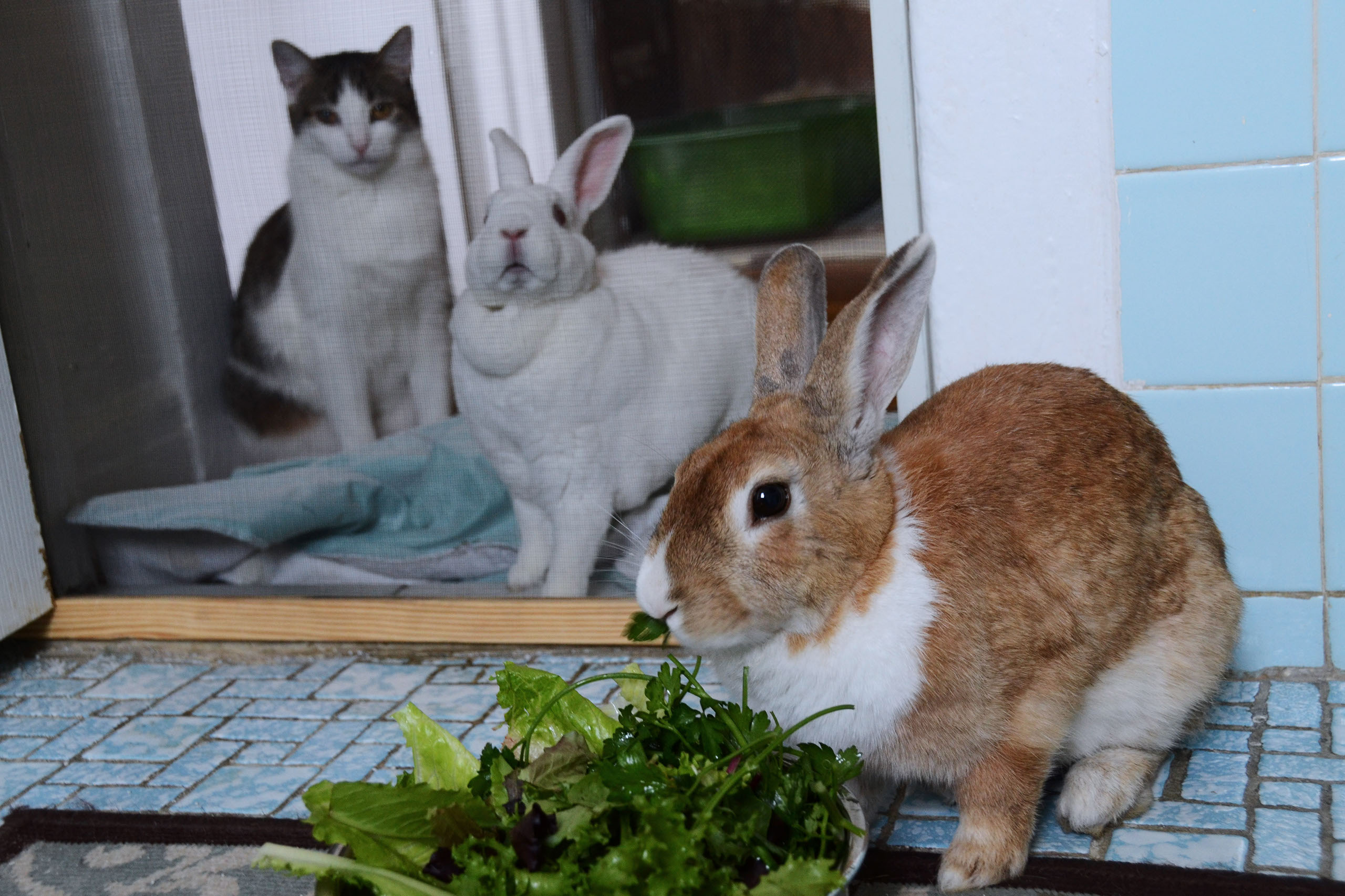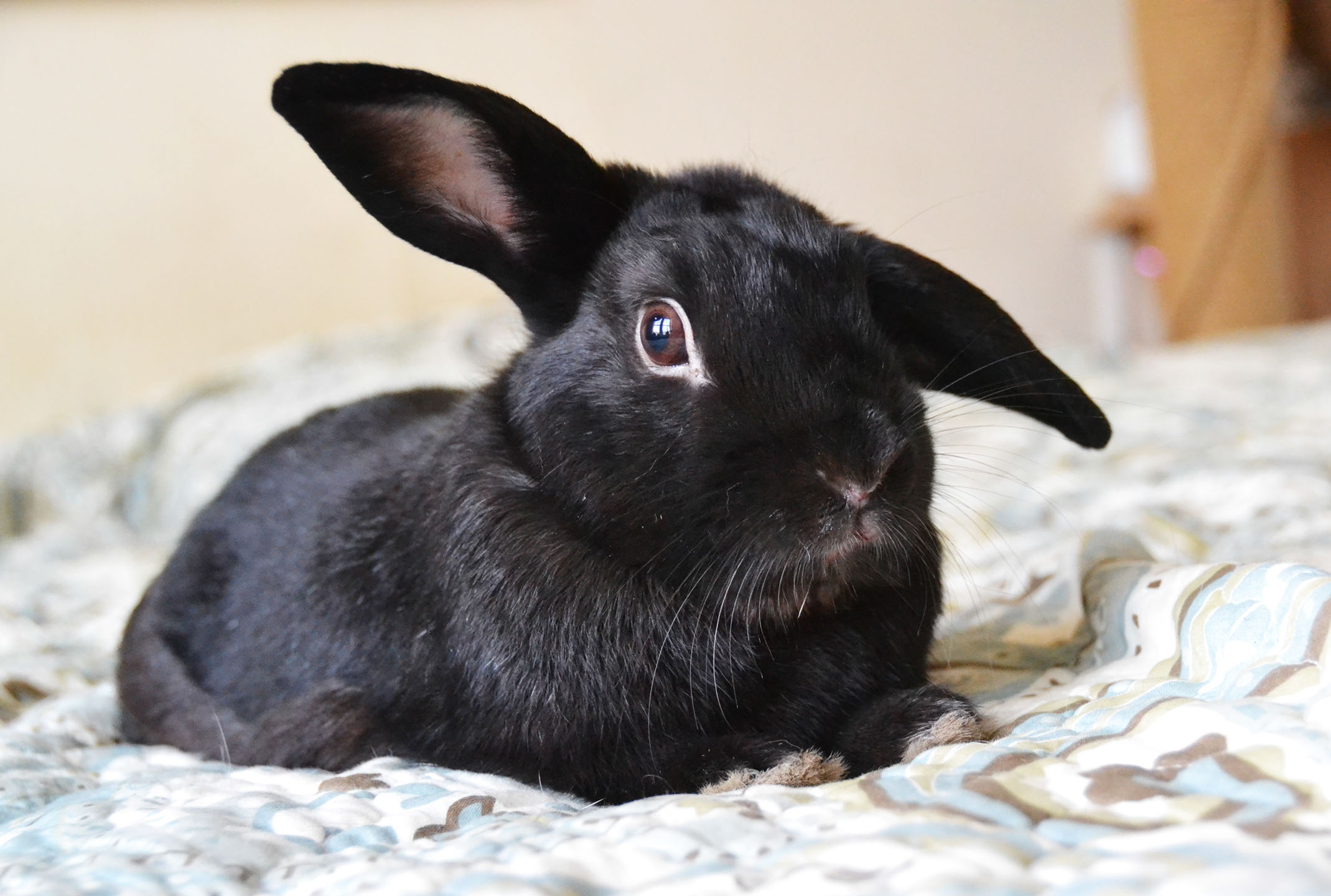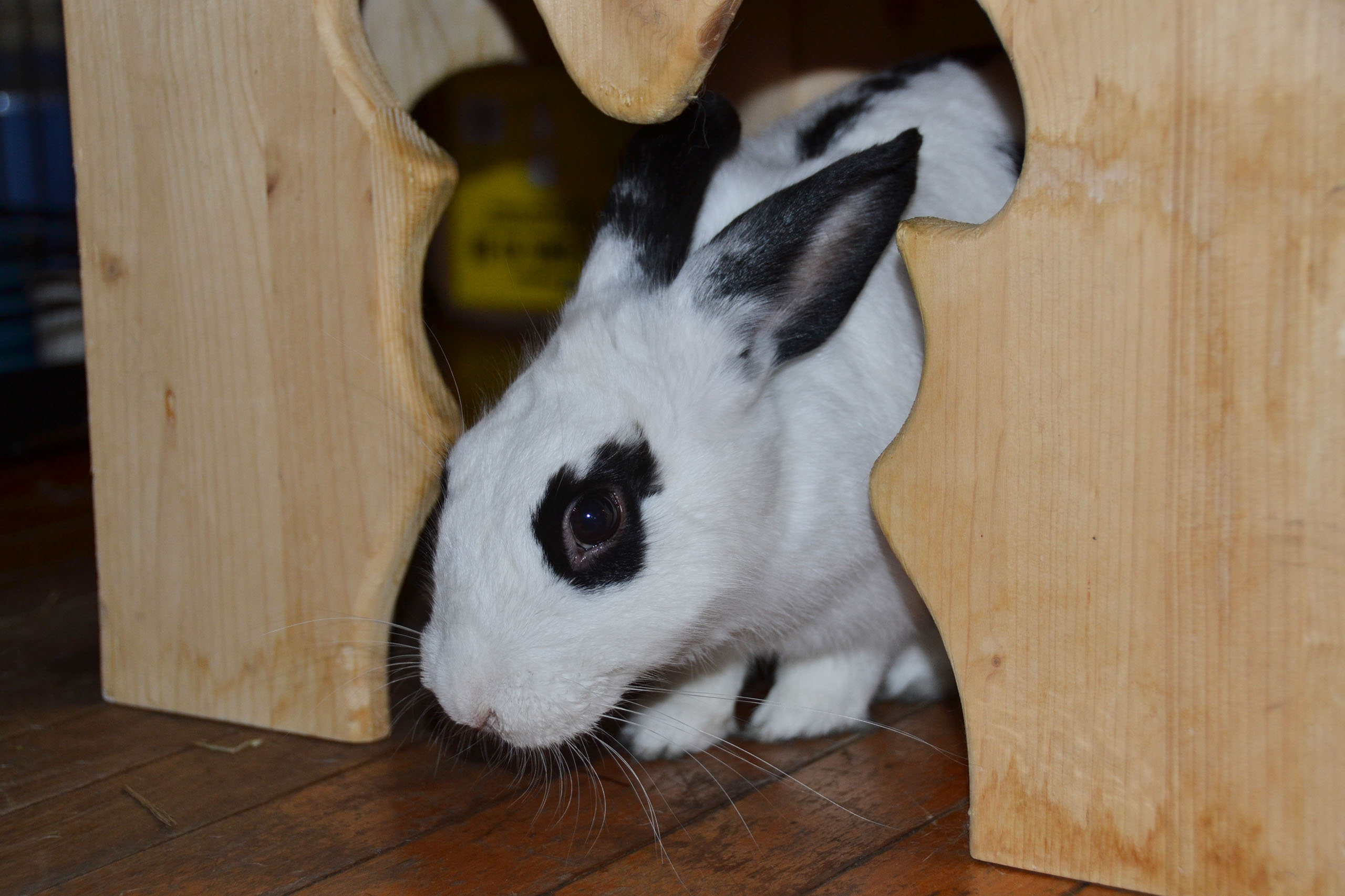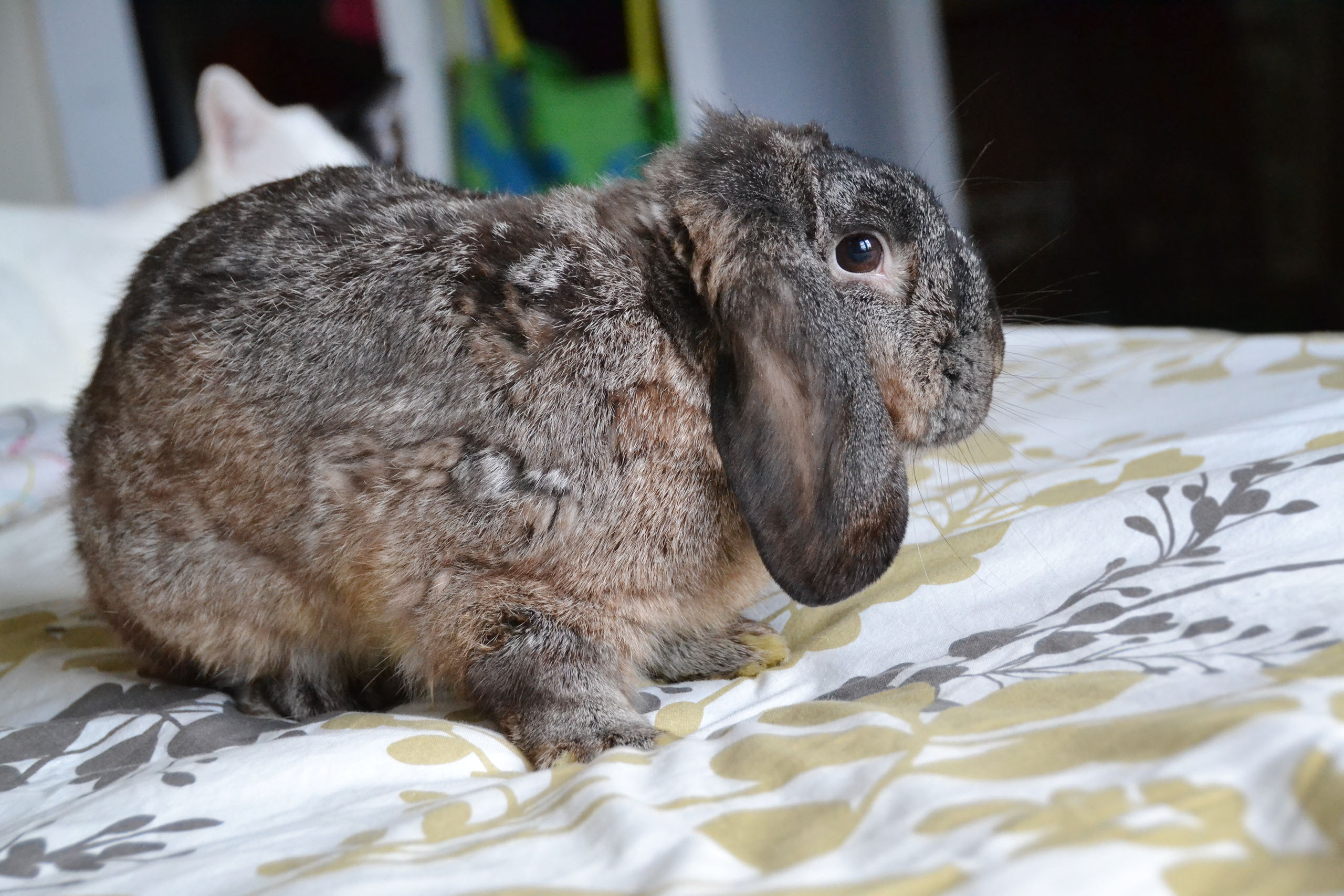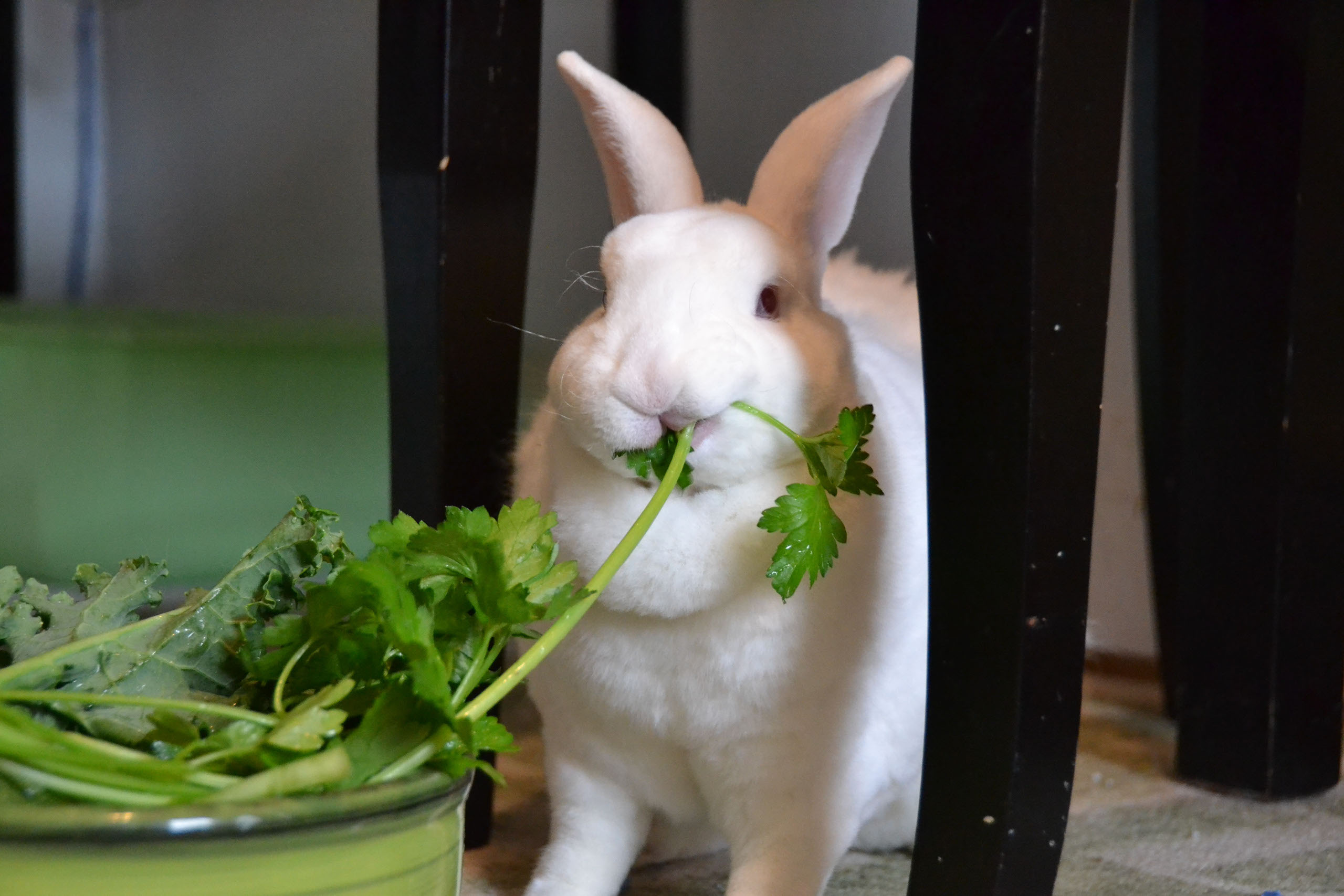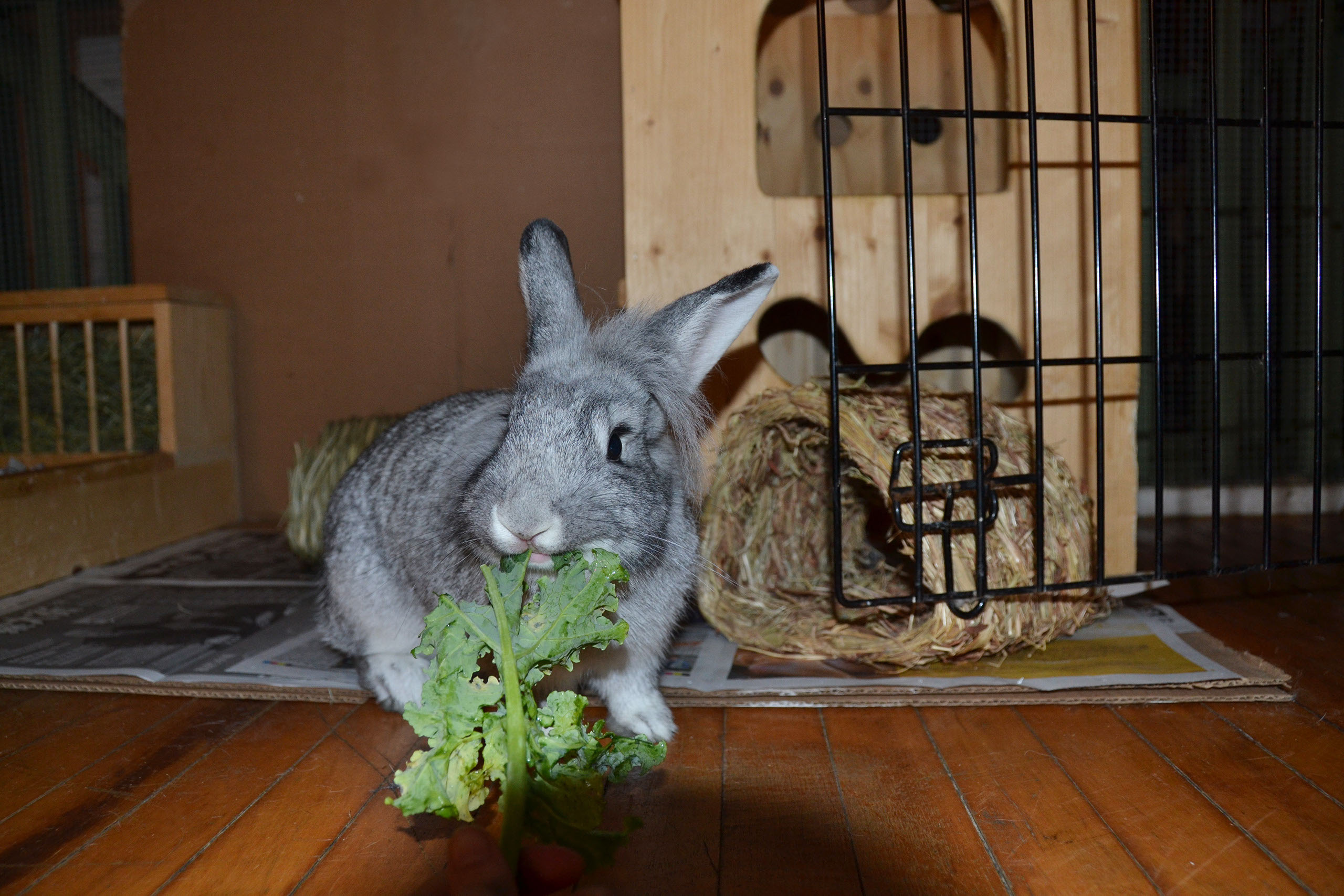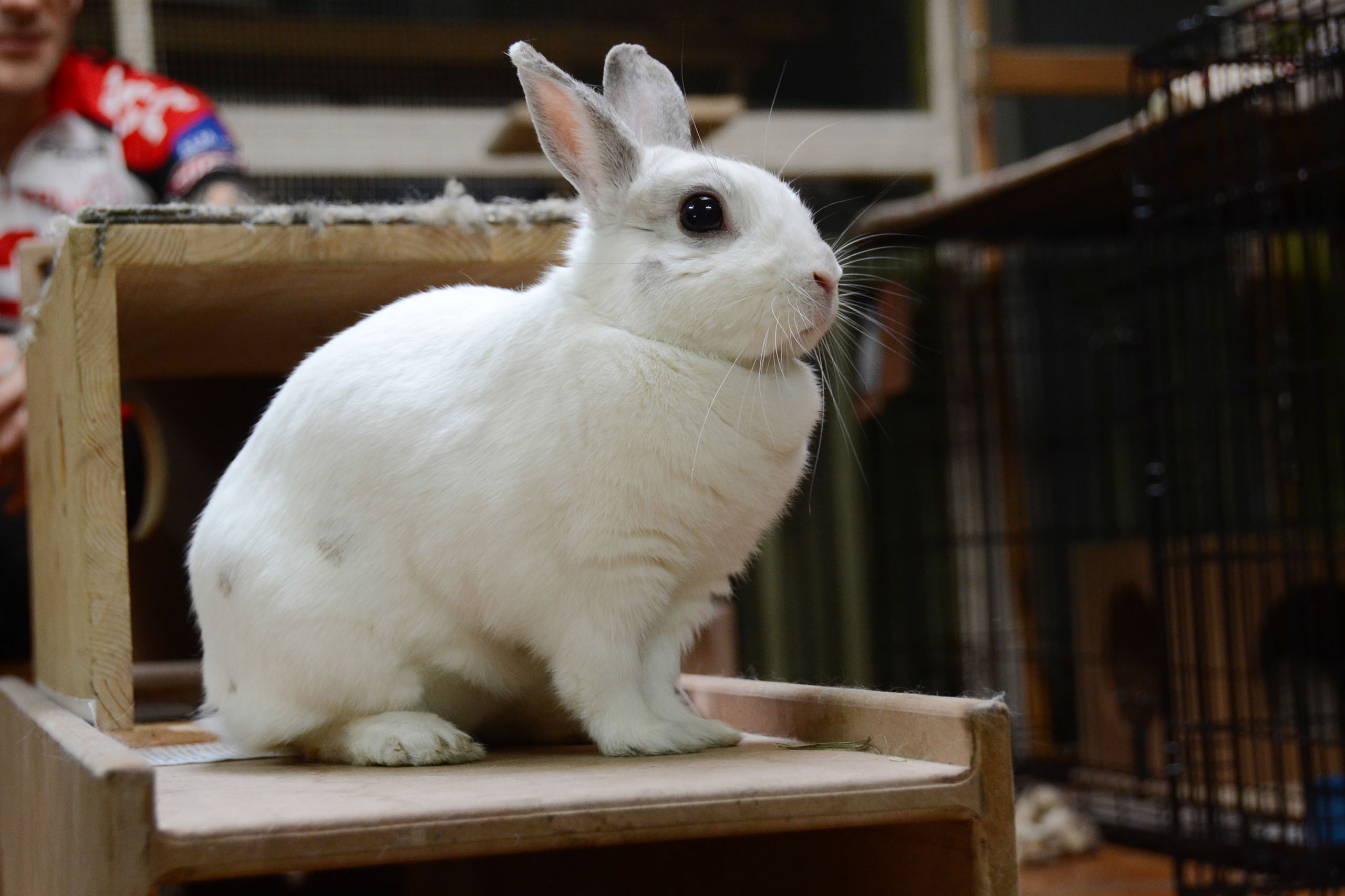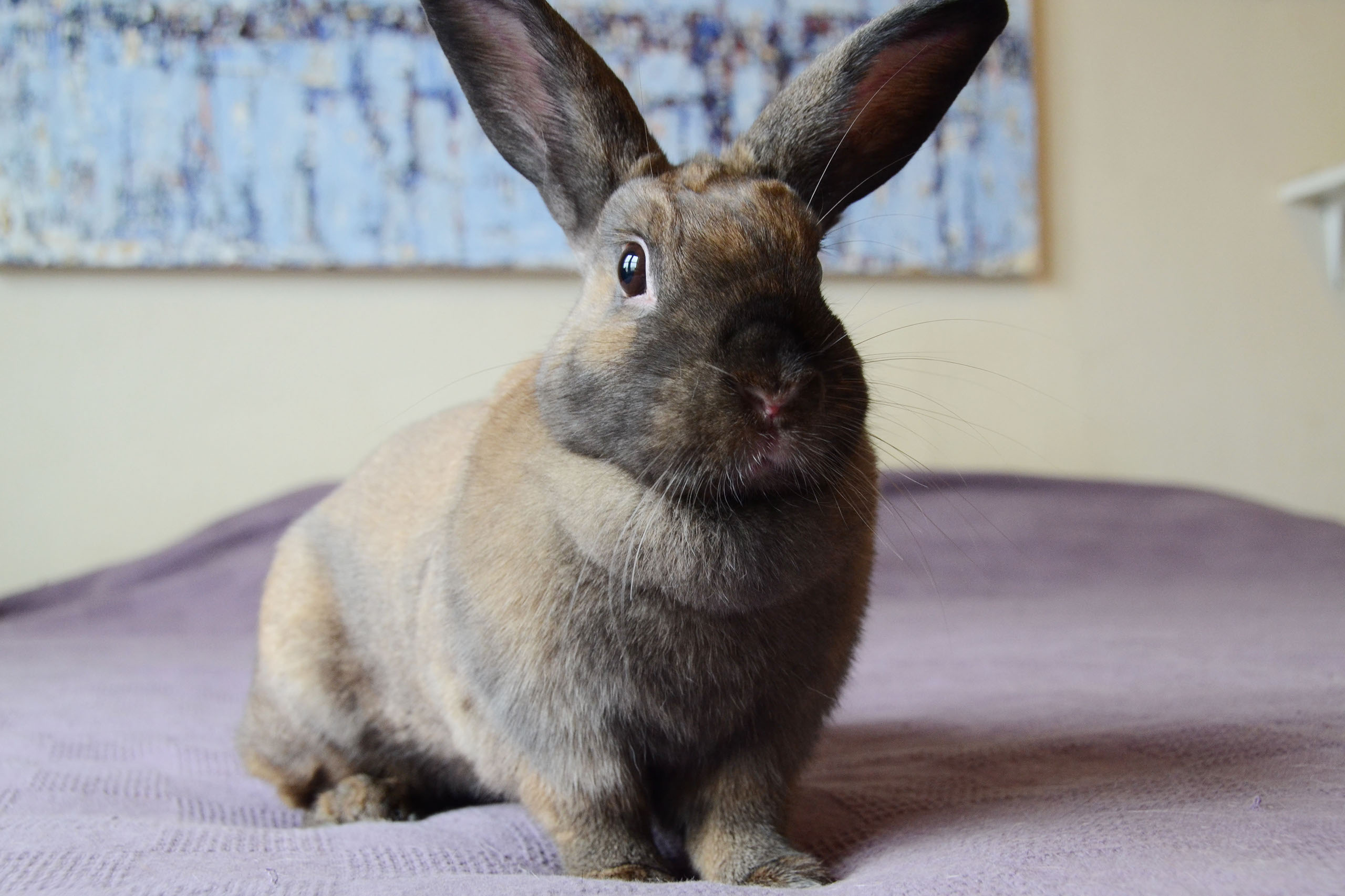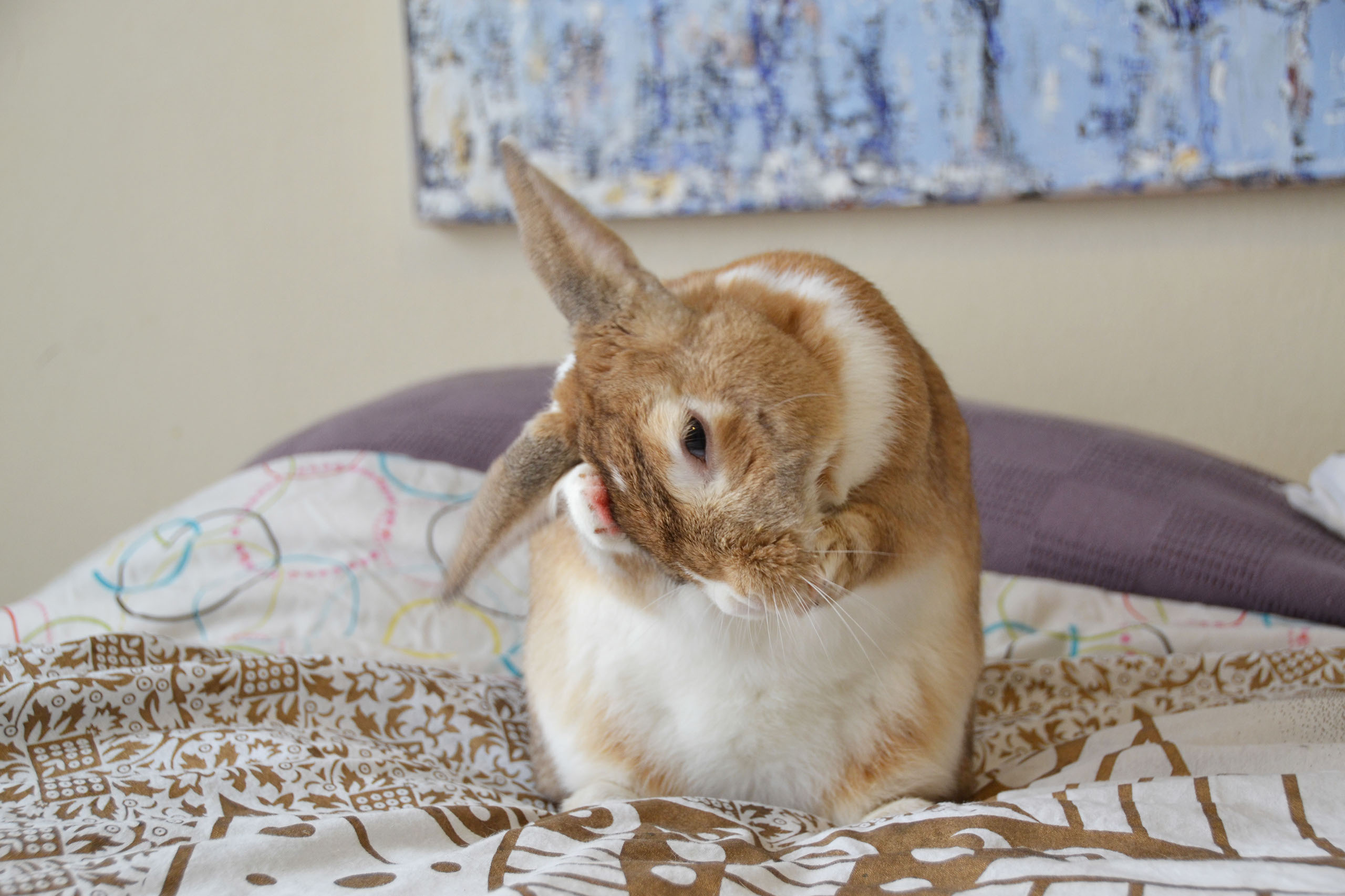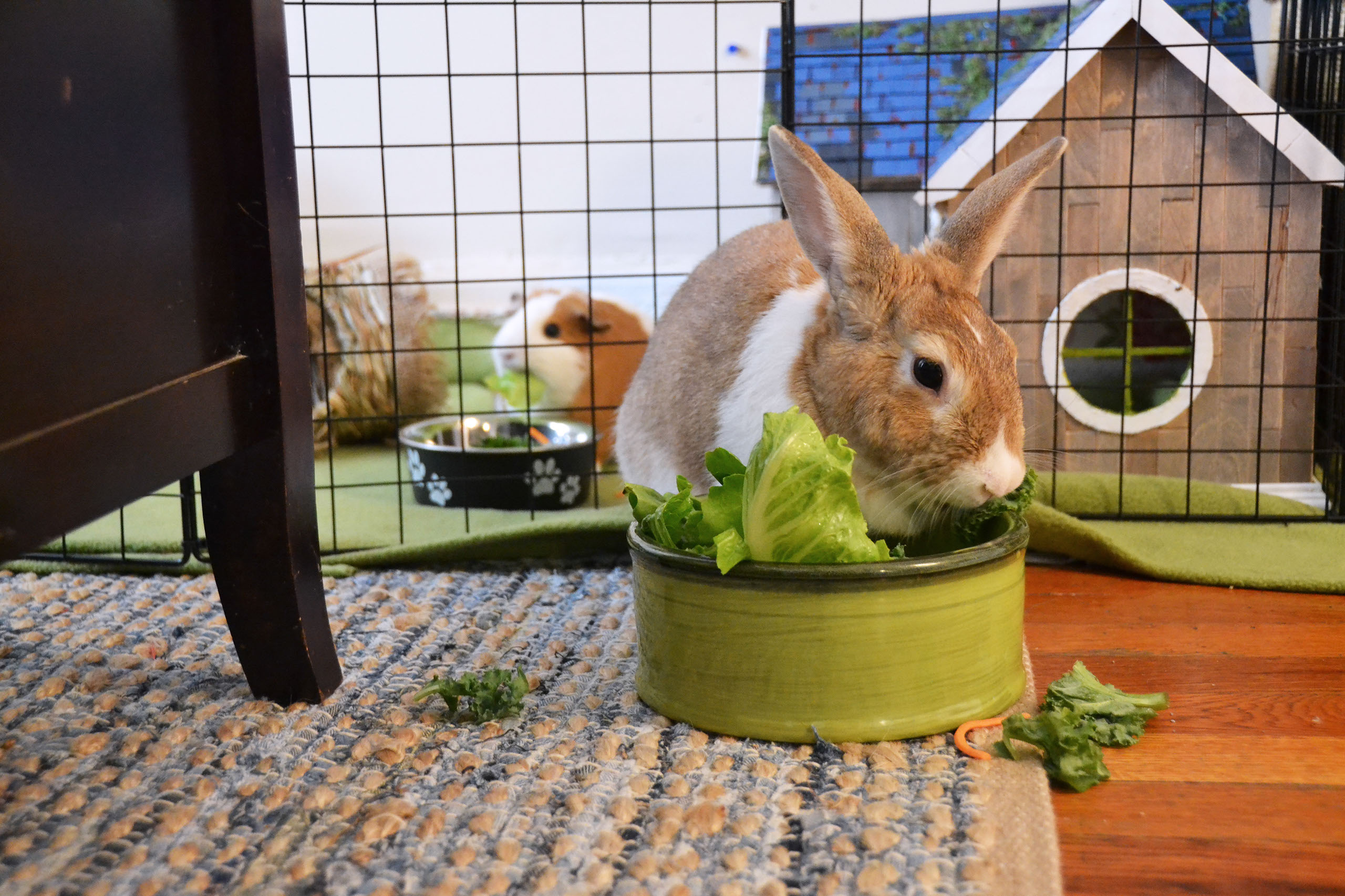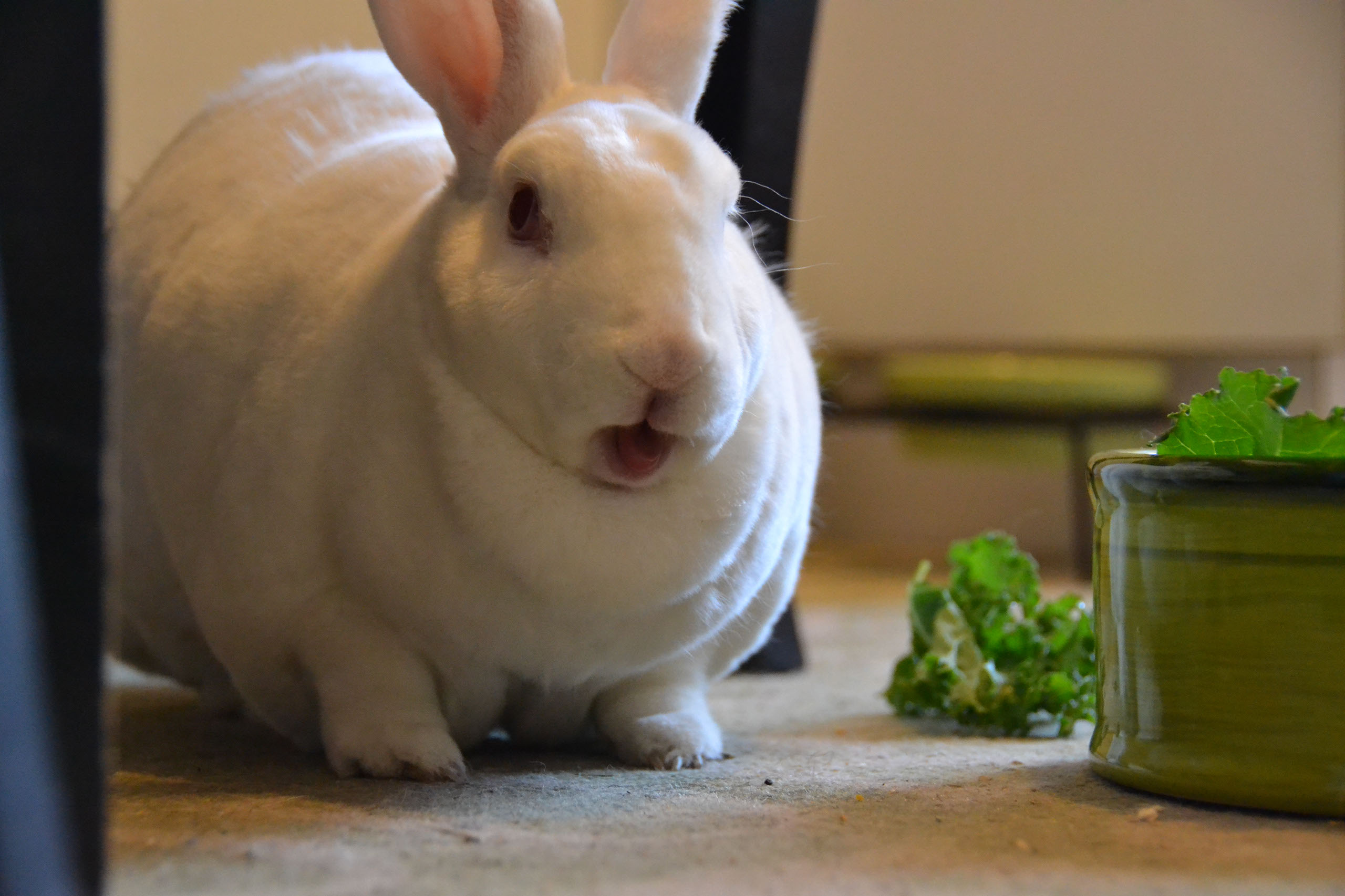2. Boredom and depression are common symptoms of loneliness in rabbits. Rabbits left alone in a home while the human guardians are away will often resort to destructive behavior, hyperactivity, or withdrawal.
3. Studies have shown that bunnies who live with a member of their own species are healthier, cleaner due to mutual grooming, and also live longer.
4. As even the most bunny-diligent guardian will tell you, we can never fully speak bunny! As soon as a bond between two bunnies happens, the shared adventures and happiness are painfully obvious! In fact, it seems we never really know the true personality of our bunny until she/he is sharing a home with another.
5. By adopting your new friend from a shelter or rescue group you can save two lives, which is even better than saving one!
To read about bunny bonding, please see THIS article.
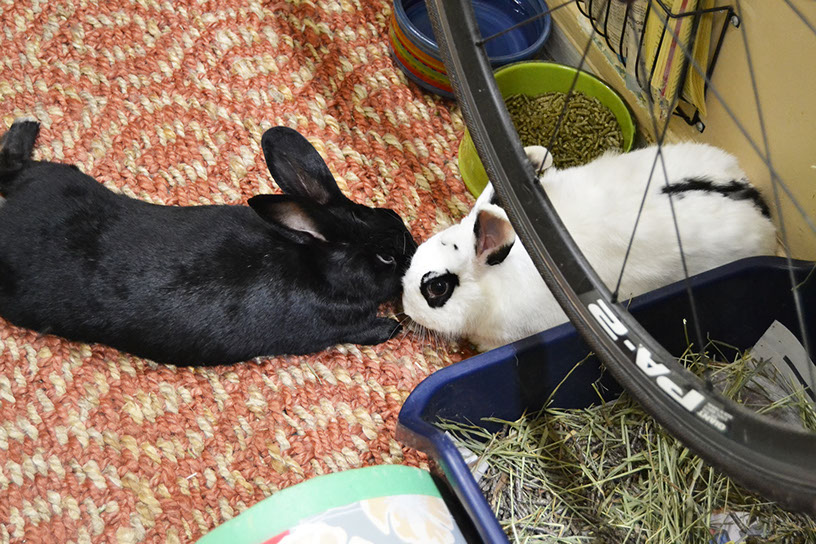
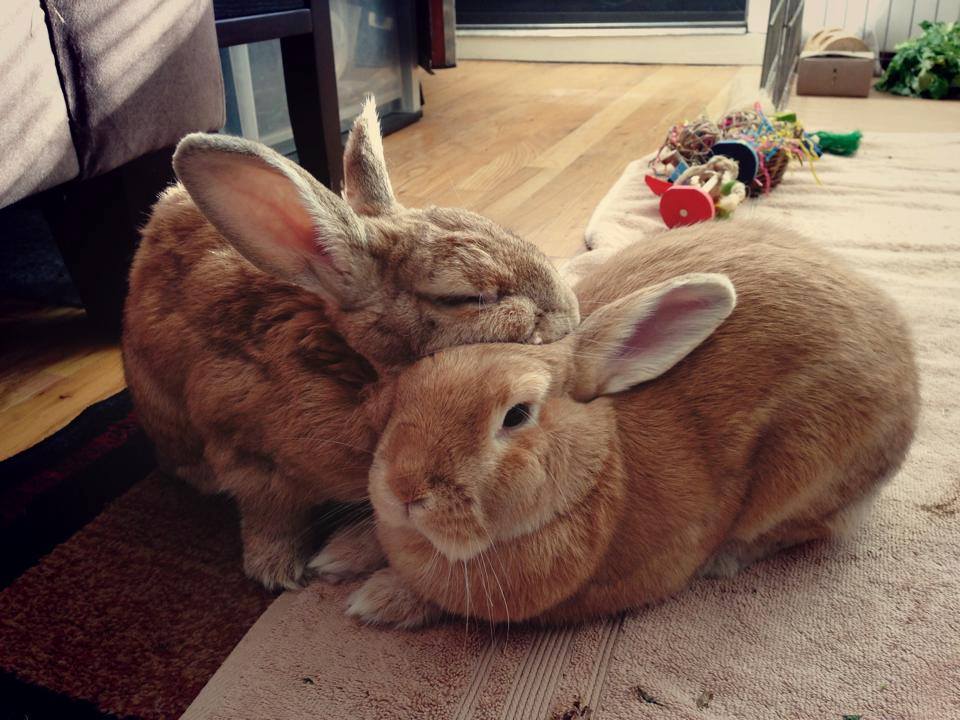
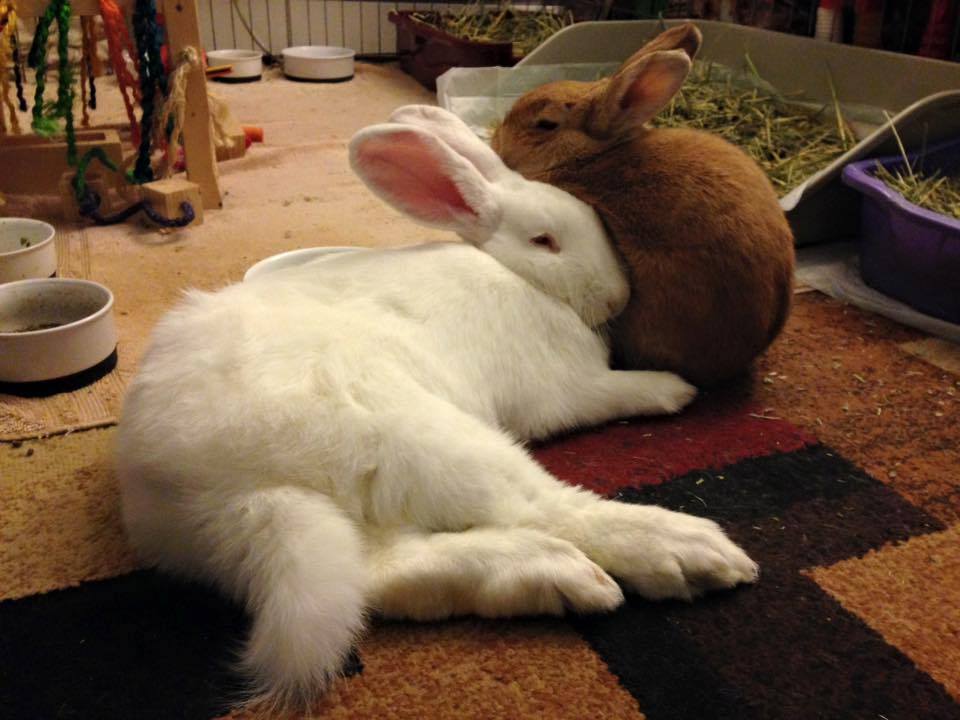
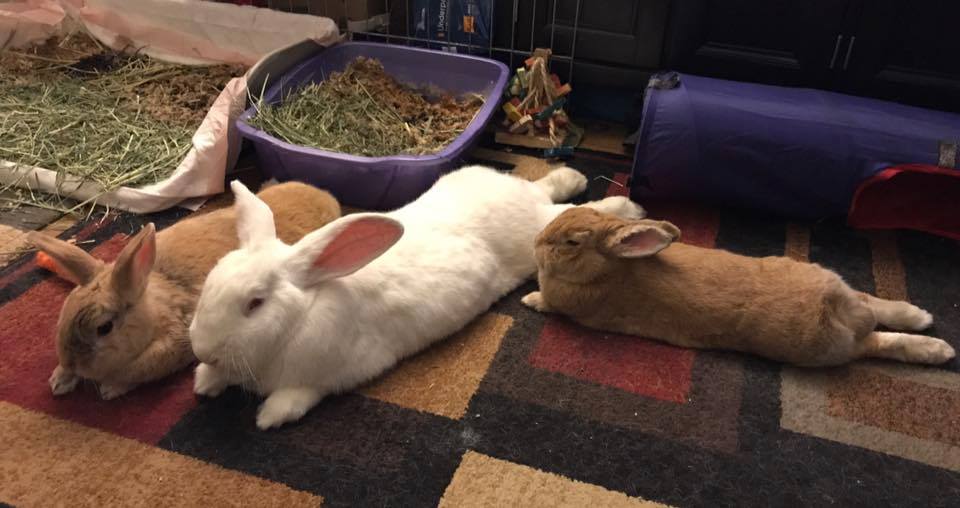
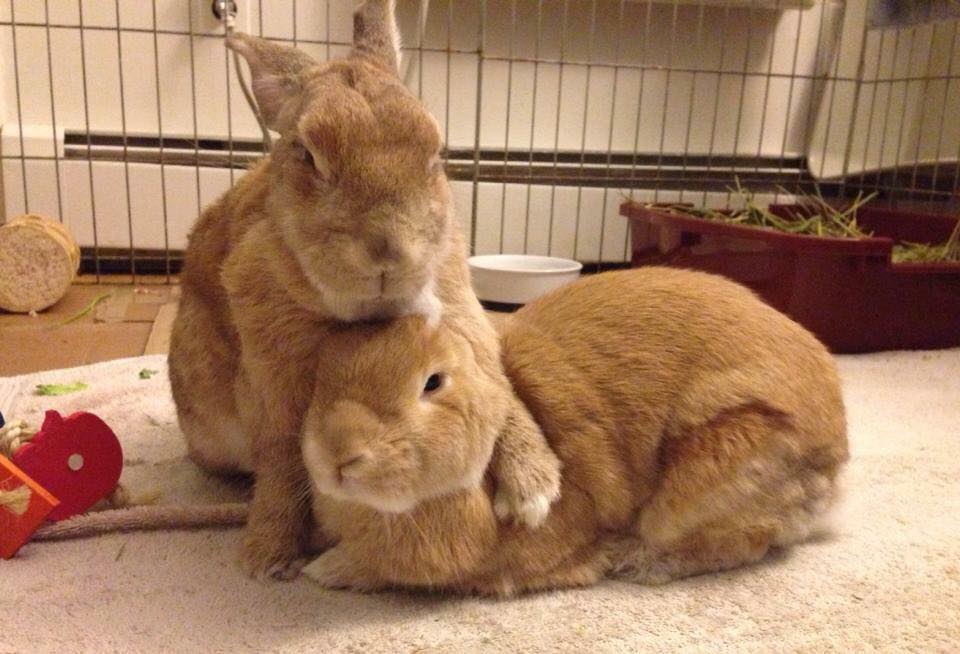
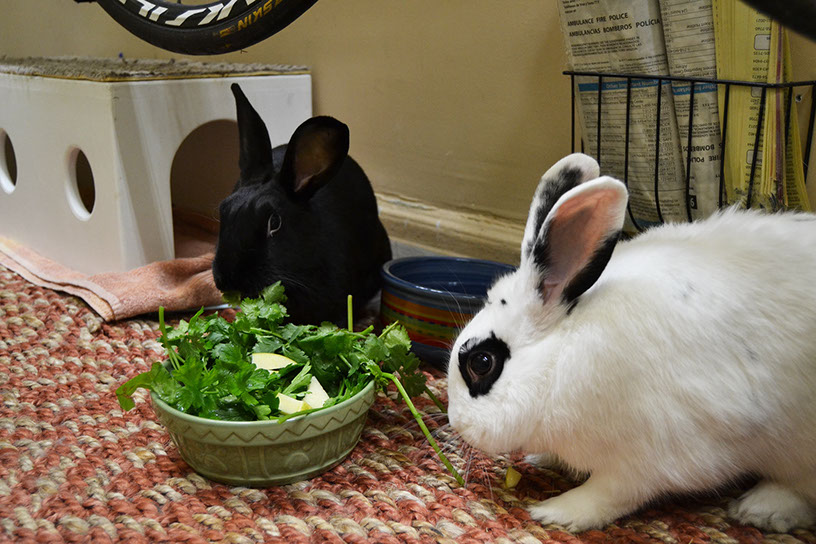
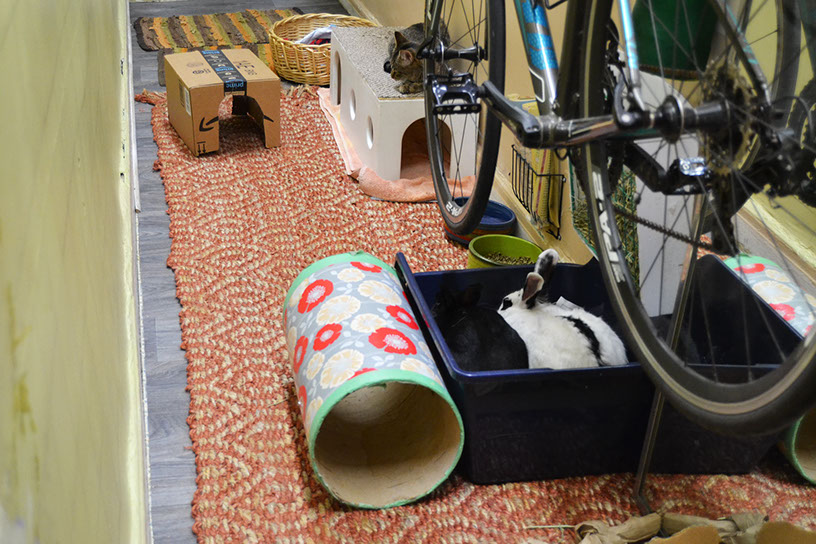
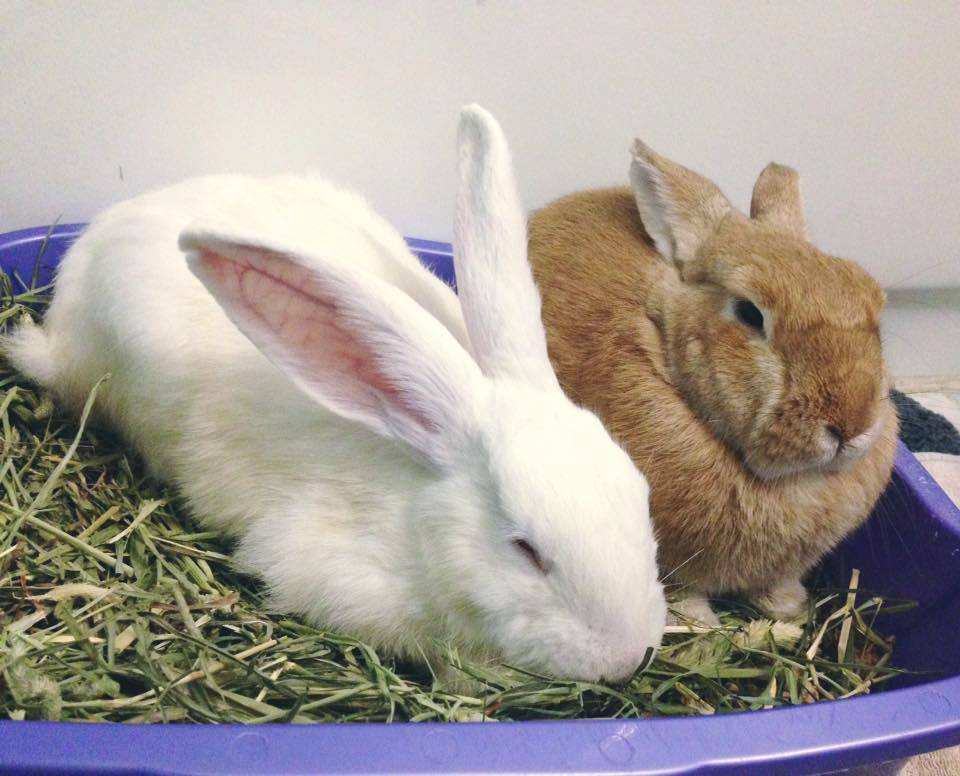
When you adopt a rabbit(s), you want to be assured of several things. You want him/he to be mentally and physically healthy. You want to know the pluses and minuses of living with a rabbit. You want reliable information on how to prepare your home, and how to care for your rabbit(s). You want a rabbit that is a good match to your household. You want rabbit knowledgeable people to consult with when questions come up about your rabbit(s).
Foster parents at ECC are very knowledgeable about their charges, and can answer all the questions you may have about rabbits in general, or about an individual rabbit. In addition, all of our adoptable bunnies are spayed/neutered, and most of them are already trained to use a litter box, and are socialized. Or volunteers can discuss with you an individual rabbit's quirks, can advise you if a rabbit will adjust to children and/or other household companion animals, their food preferences, and their general temperament. This means that you can get lots of great help, before you make a decision about the rabbit that you are interested in, and thereby avoid any potential adoption pitfalls.
In addition, we are motivated by what is in the best interest of rabbits, their health, and their longevity. We keep up on the latest veterinary literature, often have consulting rabbit veterinarians, and we know which products are best for your adopted rabbit(s).
All this adds up to a better chance for you, and your rabbit(s), living happily and healthily together, and decreases the chances of yet another rabbit ending up abandoned, neglected, and homeless.

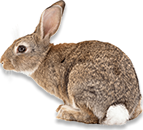

At what age should rabbits be spayed or neutered?
- Females can be spayed as soon as they sexually mature, usually around 4 months of age, but many veterinarians prefer to wait until they are 6 months old, as surgery is riskier on a younger rabbit.
- Males can be neutered as soon as the testicles descend, usually around 3-1/2 months of age.
When is a rabbit too old to be spayed or neutered?
- Veterinarians will have their own opinions on this, but in general, after a rabbit is 6 years old, anesthetics and surgery become more risky, but that doesn’t mean it can’t be done. Simply consult your veterinarian regarding your rabbit’s health and circumstances, and opt for pre-surgical blood work.
- It is always a good idea, in a rabbit over 2 years of age, to have a very thorough health check done, including full blood work. This may be more expensive than the surgery, but it will help detect any condition that could make the surgery more risky. This is especially important if anesthetics other than isofluorene are used.
Can you tell if a female rabbit has already been spayed?
- The probability is very high that she hasn’t.
- One can shave the tummy and look for a spay scar. However, when veterinarians use certain stitching techniques, there is no scar whatsoever. Hopefully, these veterinarians will tattoo the tummy to indicate the spay has been done, but otherwise, the only way of knowing is to proceed with the surgery.
- Altered rabbits are healthier and live longer than unaltered rabbits. The risk of reproductive cancers (ovarian, uterine, mammarian) for an un-spayed female rabbit stands at is virtually eliminated by spaying your female rabbit. Your neutered male rabbit will live longer as well, given that he won’t be tempted to fight with other animals (rabbits, cats, etc.) due to his sexual aggression.
- Altered rabbits make better companions. They are calmer, more loving, and dependable once the undeniable urge to mate has been removed. In addition, rabbits are less prone to destructive (chewing, digging) and aggressive (biting, lunging, circling, growling) behavior after surgery.
- Avoidance of obnoxious behavior. Un-neutered male rabbits spray, and both males and females are much easier to litter train, and much more reliably trained, after they have been altered.
- Altered rabbits won’t contribute to the problem of overpopulation of rabbits. Over 7 million adorable dogs, cats, and rabbits are killed in animal shelters in this country every year. In addition, unwanted rabbits are often abandoned in fields, parks, or on city streets to fend for themselves, where they suffer from starvation, sickness, and are easy prey to other animals or traffic accidents. Those rabbits who are sold to pet stores don’t necessarily fare any better, as pet stores sell pets to anyone with the money to buy, and don’t check on what kind of home they will go to. Many of these rabbits will be sold as snake food, or as a pet for a small child who will soon “outgrow” the rabbit.
- Altered rabbits can safely have a friend to play with. Rabbits are social animals and enjoy the company of other rabbits. But unless your rabbit is altered, he or she cannot have a friend, either of the opposite sex, or the same sex, due to sexual and aggressive behaviors triggered by hormones.
- Spaying and neutering for rabbits has become a safe procedure when performed by experienced rabbit veterinarians. The House Rabbit Society has had over 1000 rabbits spayed or neutered with approximately .1% mortality due to anesthesia. A knowledgeable rabbit veterinarian can spay or neuter your rabbit with very little risk to a healthy rabbit. Don’t allow a veterinarian with little or no experience with rabbits to spay or neuter your rabbit.
Did you know that rabbits (like kittens, guinea pigs, fancy rats, and many others) are BEST in pairs?
We often see the hesitation in adopting a pair with new adopters, and hear about the space and time restrictions, or even apprehension related to medical expenses for two bunnies. While these are all valid concerns, the truth of the matter is that adopting is a long term commitment, and consideration should be given to the adopted animal’s both physical and emotional needs. Providing a companion of their own species is just as important as feeding your bunny properly, allowing for daily exercise, and getting yearly (or semi-yearly, in the case of older bunnies) checkups! Here are just a few of our favorite facts about why bunnies are best in pairs.
1. In the wild a community or warren consists of as many as one hundred individuals working together to create, maintain, and peacefully share a network of tunnels. Their lives include daily cooperation to find food, guard against predators, protect, raise, and teach their young ones. Having one bunny alone in a home is a far cry from the natural order deeply built within every rabbit.


The purpose of bunny-proofing a room, or a designated area of the room, is to be able to have the rabbit(s) out, and not worry that they will injure themselves by getting stuck, or chewing on something that could harm them. Here are some important elements to consider while bunny-proofing:
- Hide your cables. Bunnies are notorious for chewing on almost anything, so make sure that the things your bunny family members are choosing to chew are pet friendly, and do not have access to electric cables. Purchasing and installing Cord Covers is a safe, and inexpensive way to protect your bunny family.
- Cover any possible areas that could lead to rabbits getting stuck or escaping into a not-bunny-proofed room. CC storage grids can provide for easy sectioning, and if connected with zip ties instead of the connectors they come with, they can easily be removed, and stored away until they are again needed.
- Adding a large play pen. For those who do not have room to install a permanent bunny play room, or can bunny proof a whole home, setting up a large play pen (build out of two or three tall doggy playpens LINK HERE) is an easy way to provide for a safe environment where you can spend some time with your rabbit friends, or even have them explore it themselves while you monitor from close by. Advantage of this would be that you can allow for more space than you would if the set up was permanent.
If not free-roaming in a bunny-proofed home, rabbits should be kept in the largest possible enclosure, preferably a pen versus a cage (but a sectioned off room is even better!), and should have ample time outside of the cage to explore and get exercise (at least 4-6 hours everyday). As a result all apartments/houses that are home to a rabbit (or the one room signed for out-of-cage time) need to be bunny-proofed.
We recommend the 30" or 36" height pen- ideally use two of these pens clipped together for your rabbit. For the purpose of bunny-proofing, pens are ideal as it is easy to bend them around furniture, they are lightweight- allowing to be moved and swept under, and they can be folded and stored when not in use.
Some examples of good pens are THIS (36”), THIS, THIS and THIS.
To see some examples of bunny enclosures at Empty Cages Collective’s foster homes please see THIS Dropbox picture folder.


A bunny's diet should consistent mostly of timothy hay, supplemented with some fresh greens and a small amount of pellets (they should not be getting much if any fruit).
Most adult rabbits maintain a good body weight on a limited amount of pellets daily, while others may require an unlimited amount. A rabbit's metabolism can change throughout their lives based on many factors including age and health status, so the amount of pellets may change accordingly. It is always best to have your rabbit seen at least yearly by a rabbit savvy veterinarian to monitor his/her weight prior to adjusting the amount of pellets fed.
Bunny owners need to buy a lot of timothy hay- not only is it the predominate part of the rabbit's diet but it serves as enrichment and bedding as well!
You can order good hay here, here, here and here.
Some safe greens include romaine, red/green leaf lettuce, parsley, kale, carrot tops, cilantro, dandelion leaves and dill. Greens to avoid are any gas producing greens including, but not limited to: broccoli, brussel sprouts, spinach and cabbage. Every rabbit may have a different response to a particular green so introduce any new green slowly and in a small amount to make sure it is well tolerated by your rabbit.
Rabbits need to be constantly eating or they will die, so you need to be able to check in on them enough to make sure they are doing so (not eating for even 8 hours can be fatal). Not urinating or defecating for more than 8 hours is an emergency for a rabbit.
More information on rabbit diets can be found here.
It's best to have your bunny drink out of a dish rather than a water bottle because it is easier and more natural. She will be able to drink more water which is better for her health. Get heavy (ceramic) dishes with sides that go straight down so she won't be able to knock them over.



To keep your bunny litter-trained, get a large litter box, line with newspaper and a rabbit safe litter and pile timothy hay on top. Your bunny is a grazing animal and will spend much of her time munching hay and will go to the bathroom in the litter box as well. It might sound strange to eat and poop in the same area, but this is the best way to keep them litter trained. The hay also protects their feet from the wet litter. Never use clay, corn or crystal litter, which can be fatal to rabbits. Feline pine or Yesterday's News are good litter brands for rabbits.
More info here.
The very best toys for your bunny are free! You can take toliet paper tubes and stuff them with hay or crumple plain non-glossy paper. A covered, enclosed area is essential for your new bunny's habitat. Because rabbits are prey animals, they like to have a safe place to hide. This can be just a cardboard box with an opening she can hop into. You can also stuff a cardboard box with newspaper and hay and watch her dig and explore!
Your bunny will dig, chew, fling and nudge toys. The main rule is anything you give your bunny should be edible so no plastic.
More information on toys for rabbits can be accessed here.
The best treats are herbs! Rabbits loves cilantro, basil and fresh oregano. You can also give very small pieces of fruit. Fruit and carrots have a lot of sugar in them which can contribute to slow gut or stasis (more info under HEALTH and in attached docs). The treats that look like colored cereal sold in pet stores is full of dye and other chemicals. Rabbits also do not need the salt licks sold in pet stores. More information on rabbit treats can be accessed here.
Healthy pet rabbits can live between 8-12 years!







